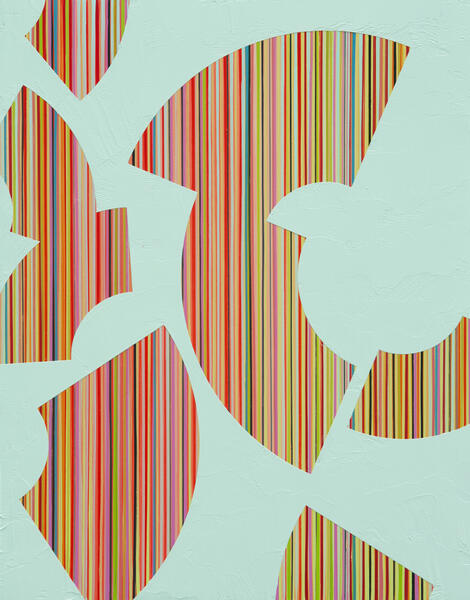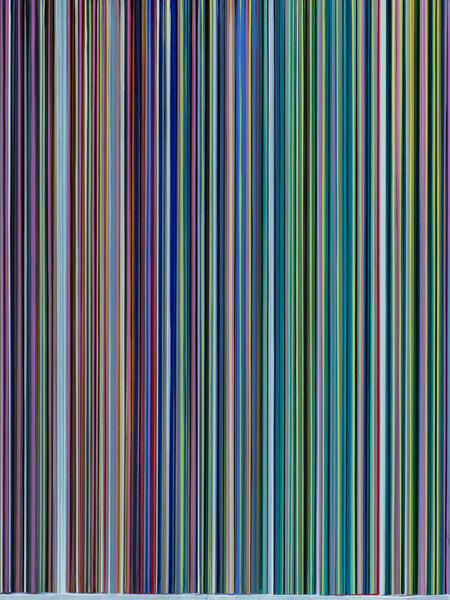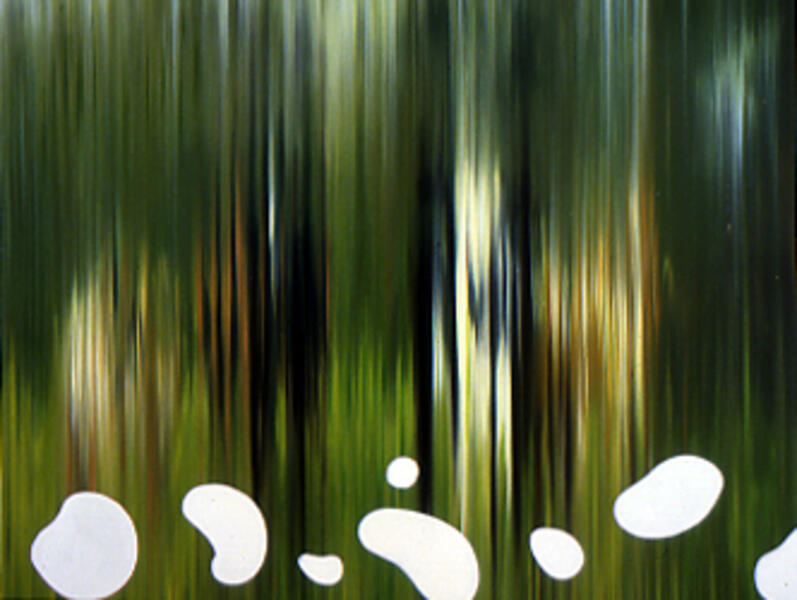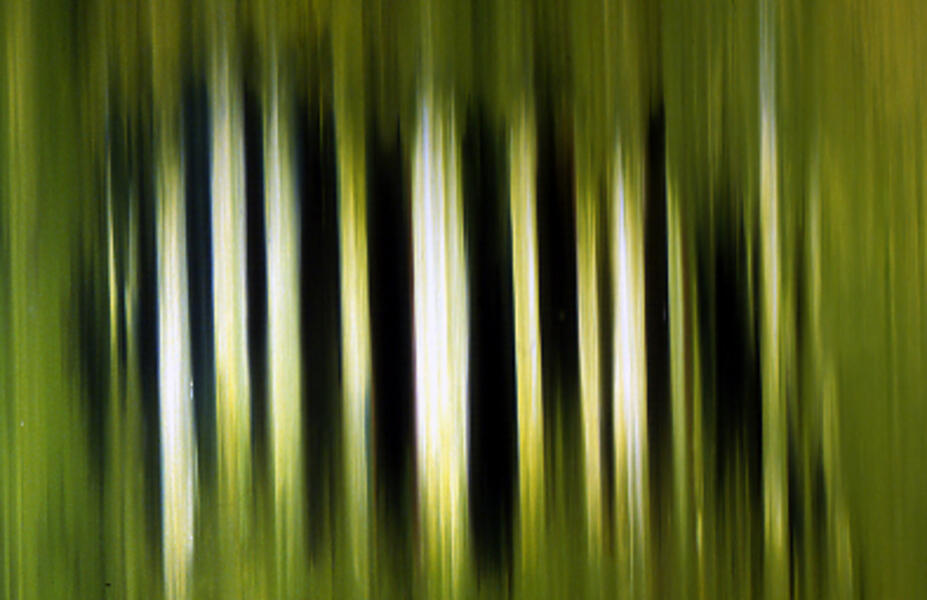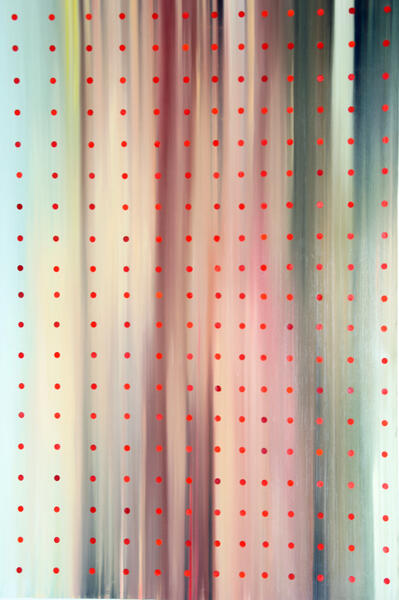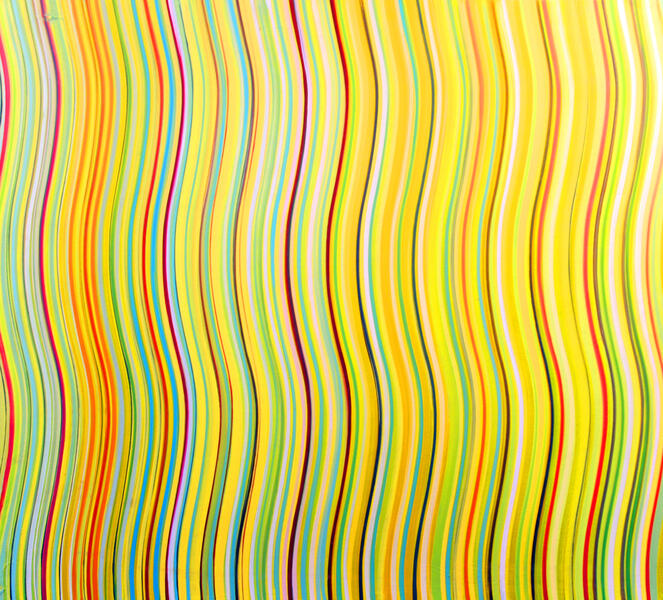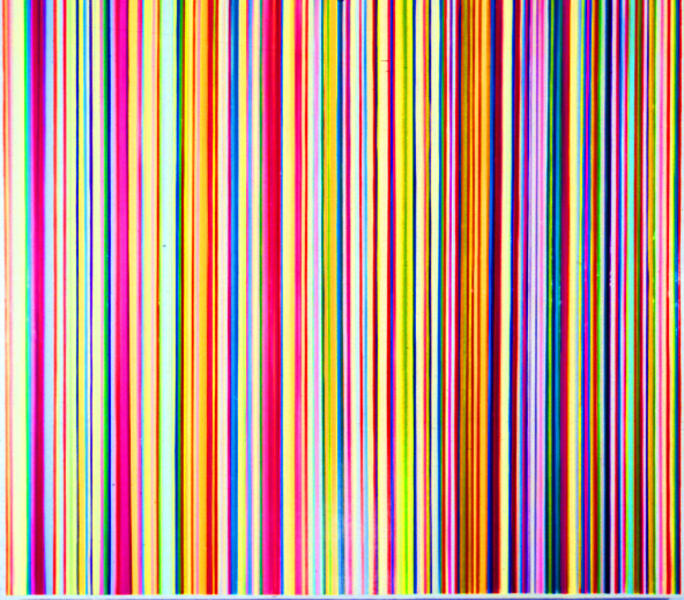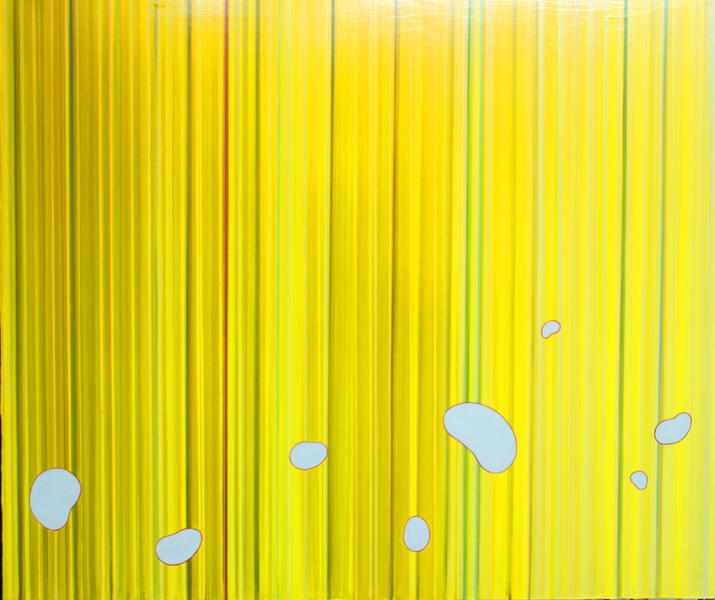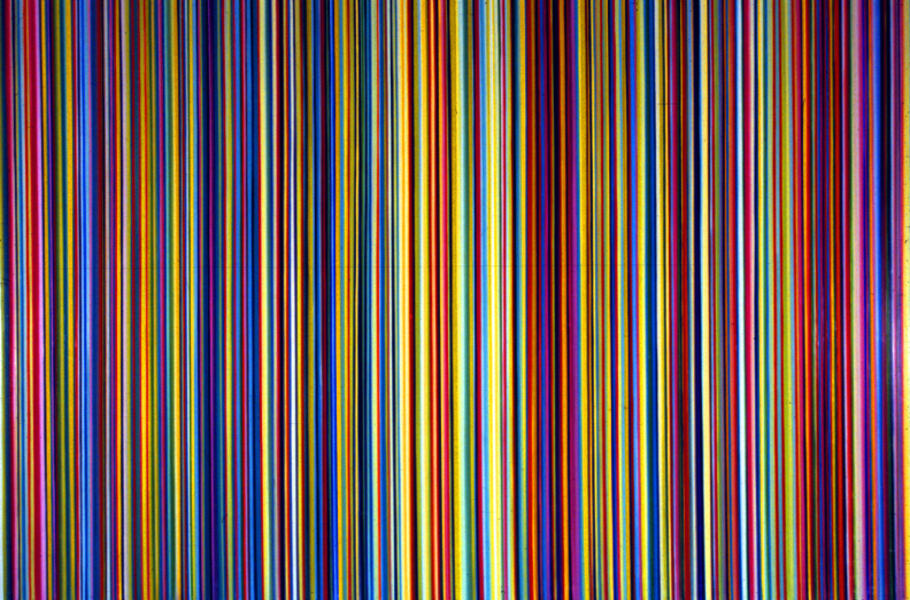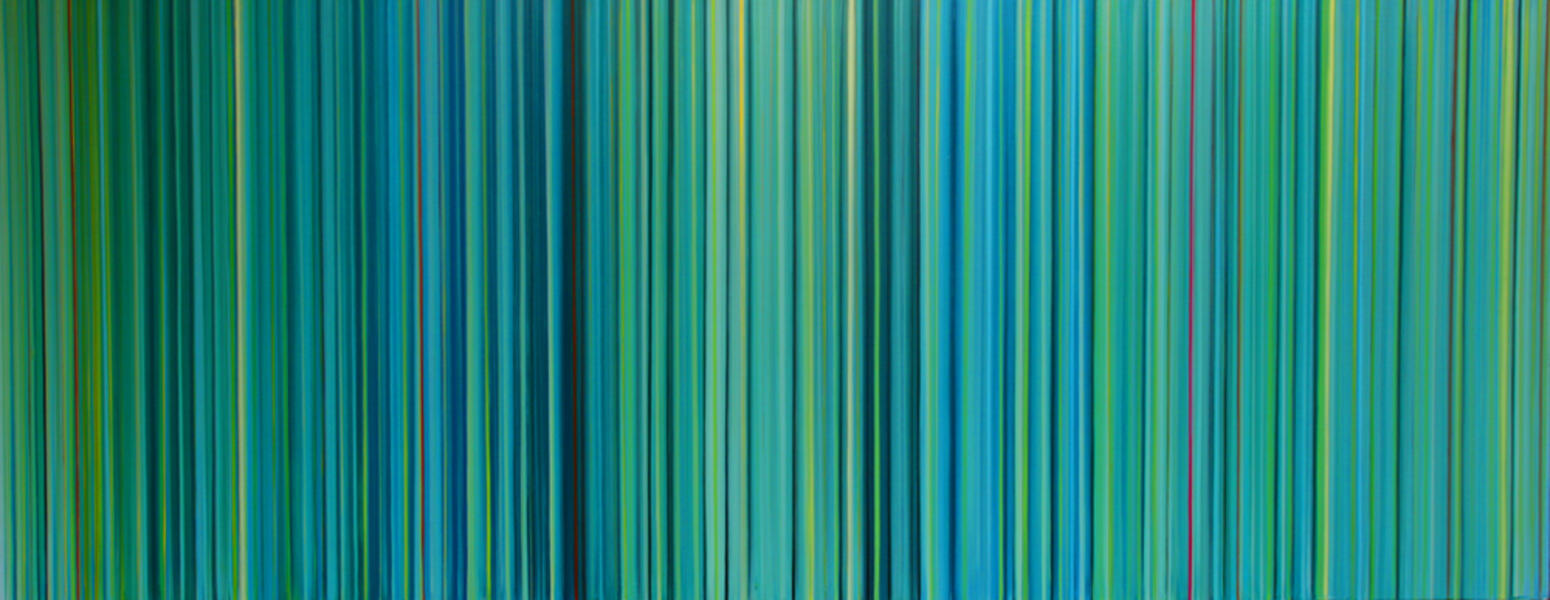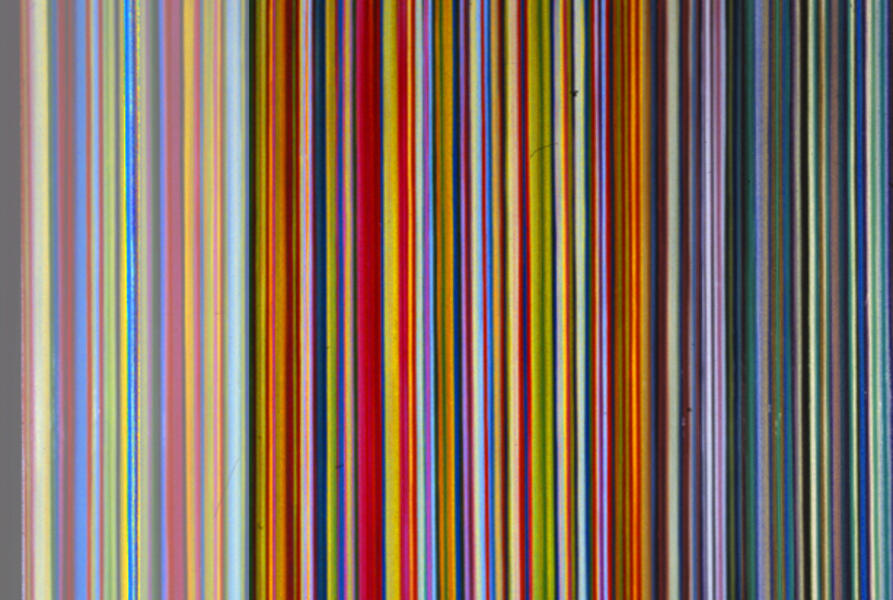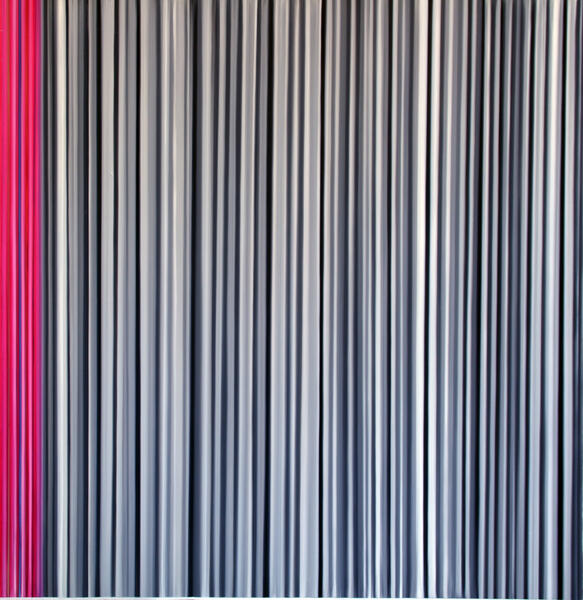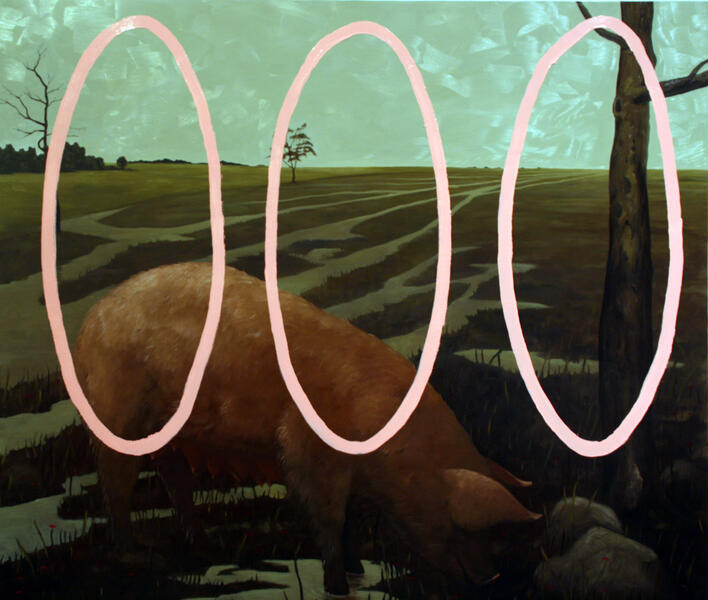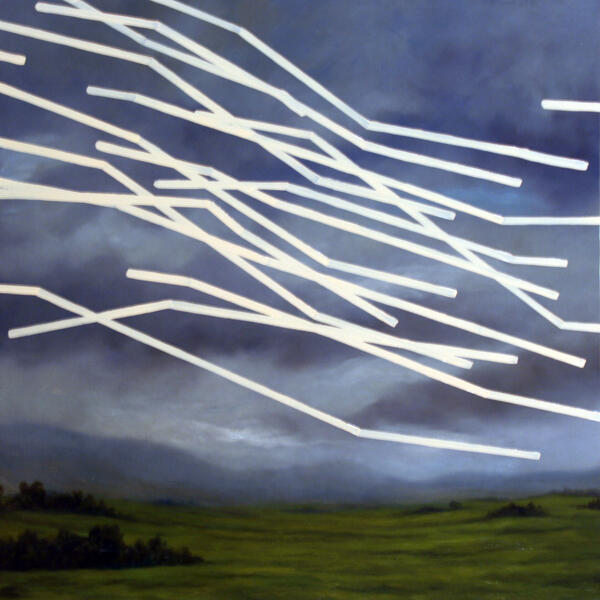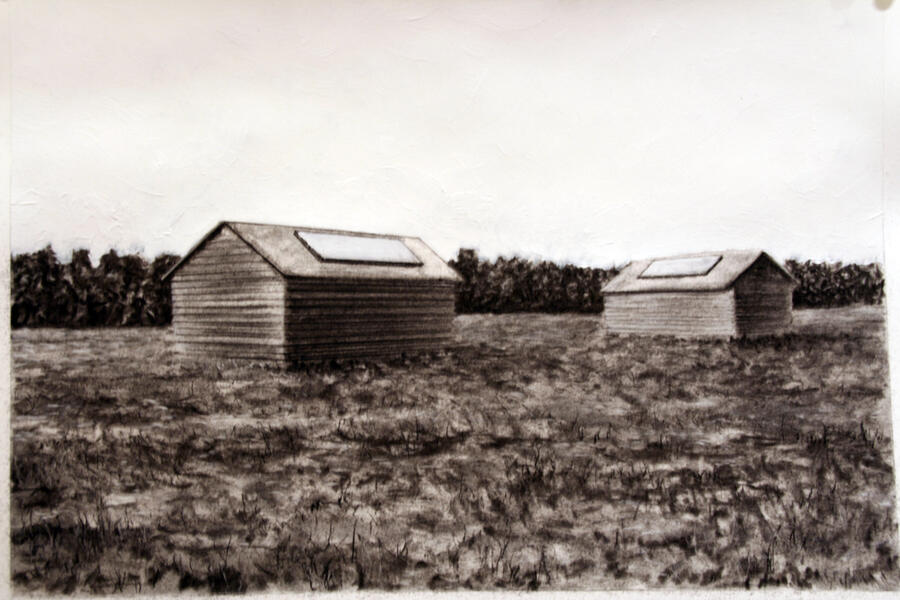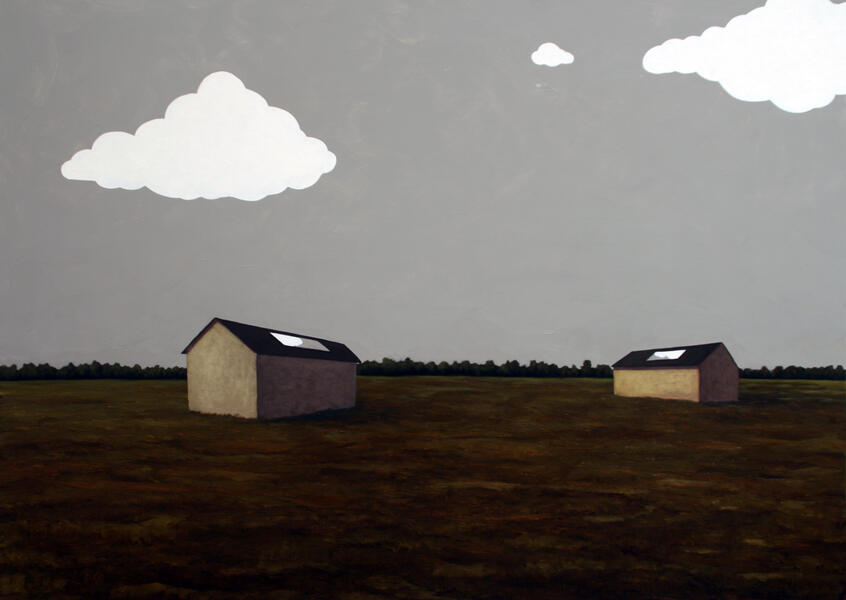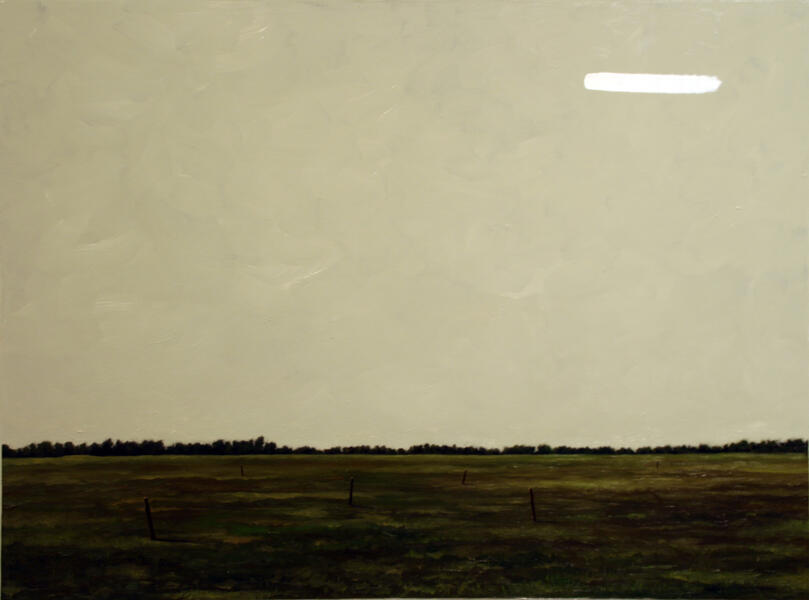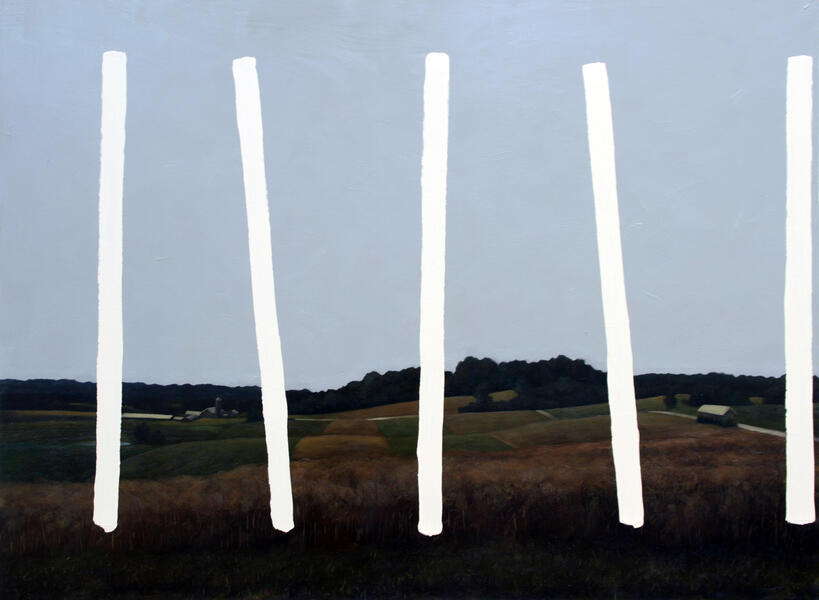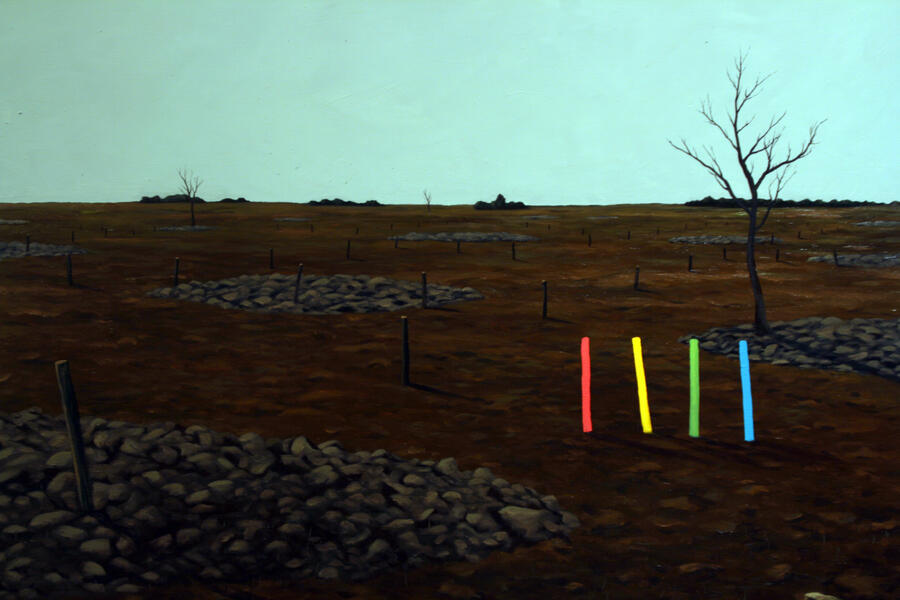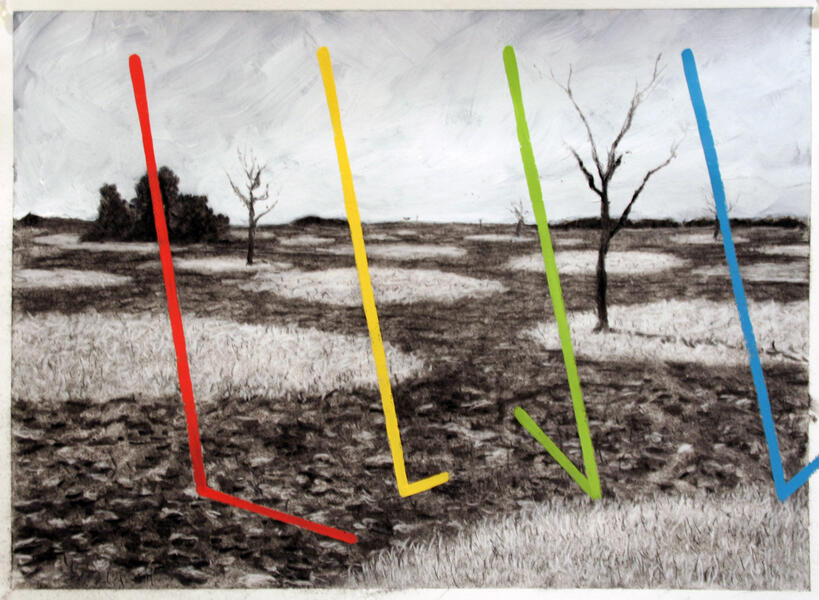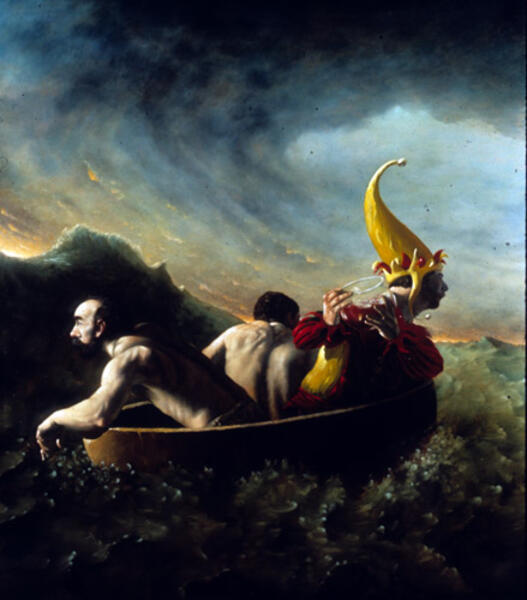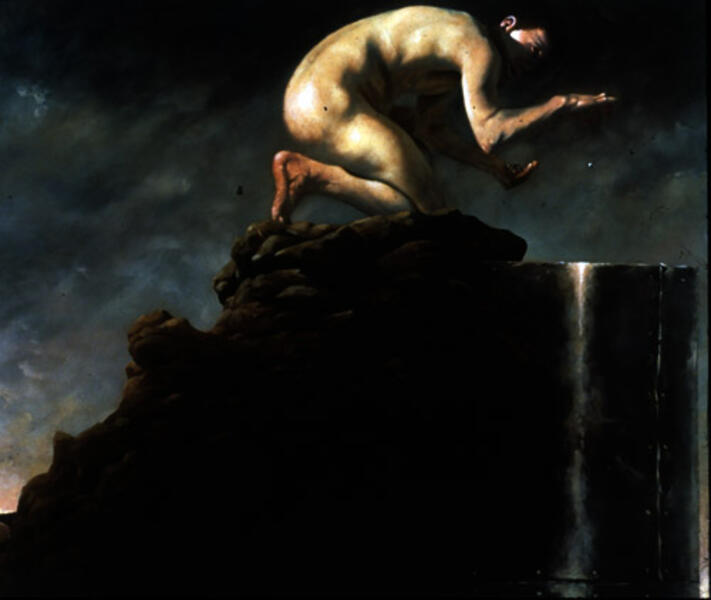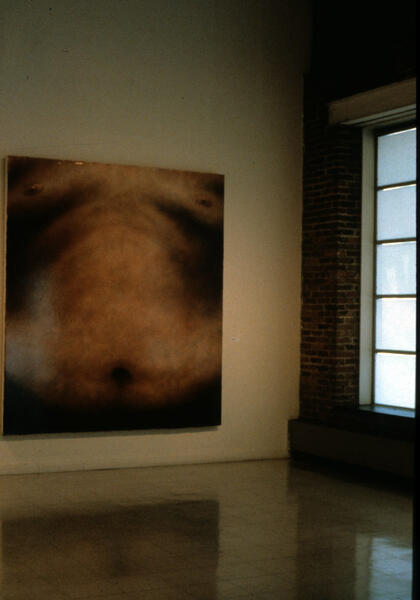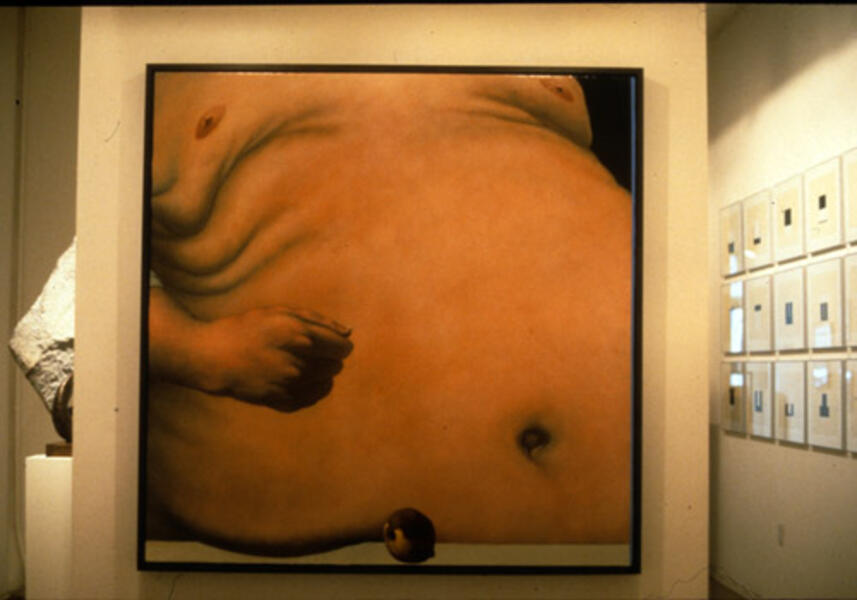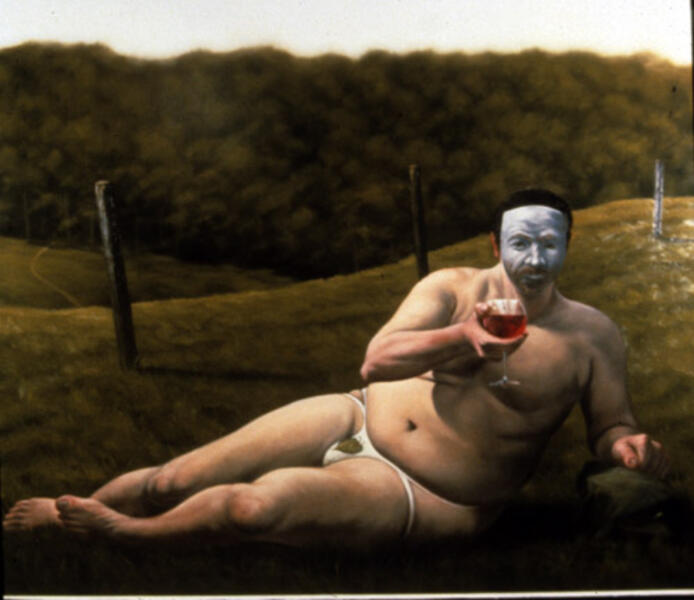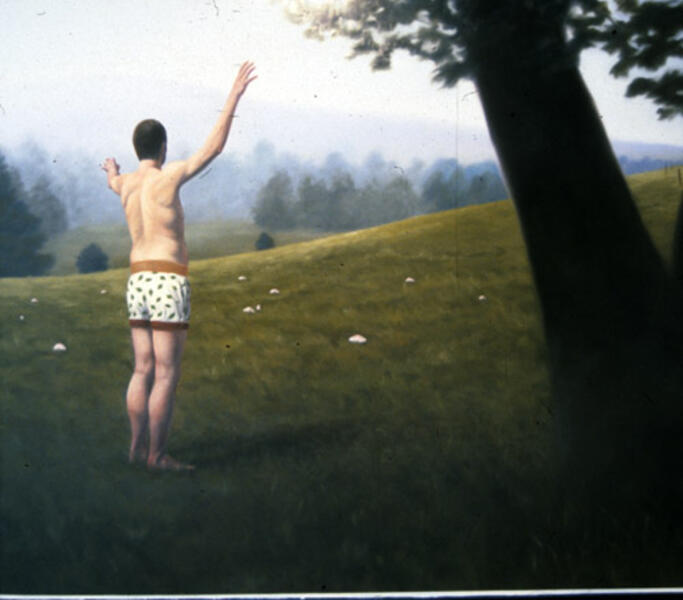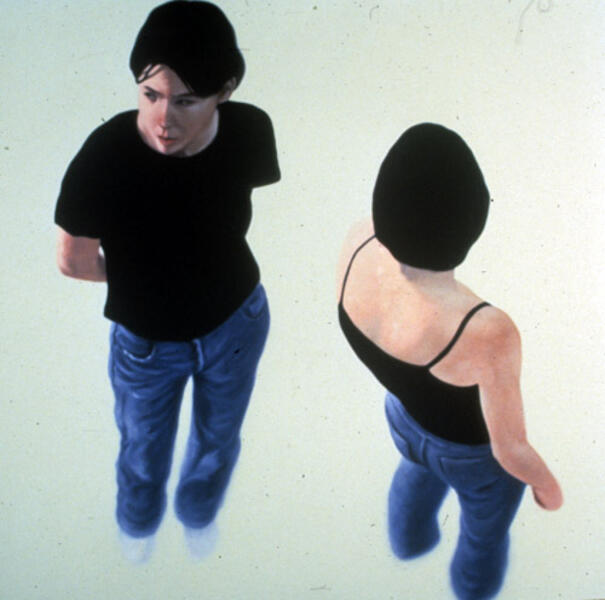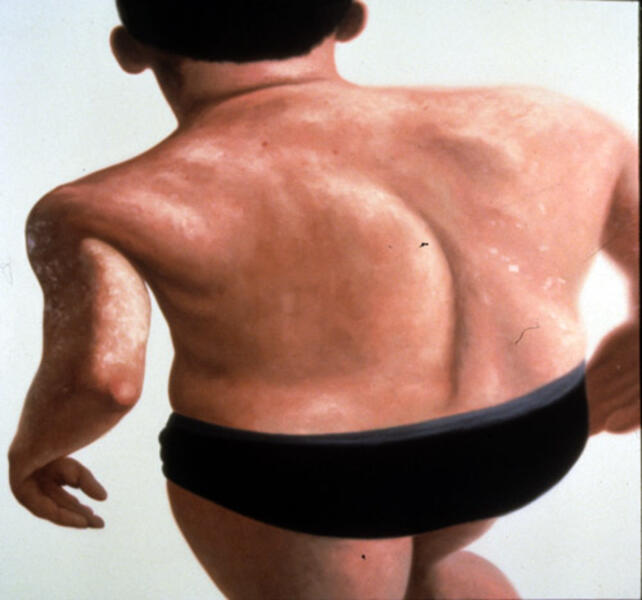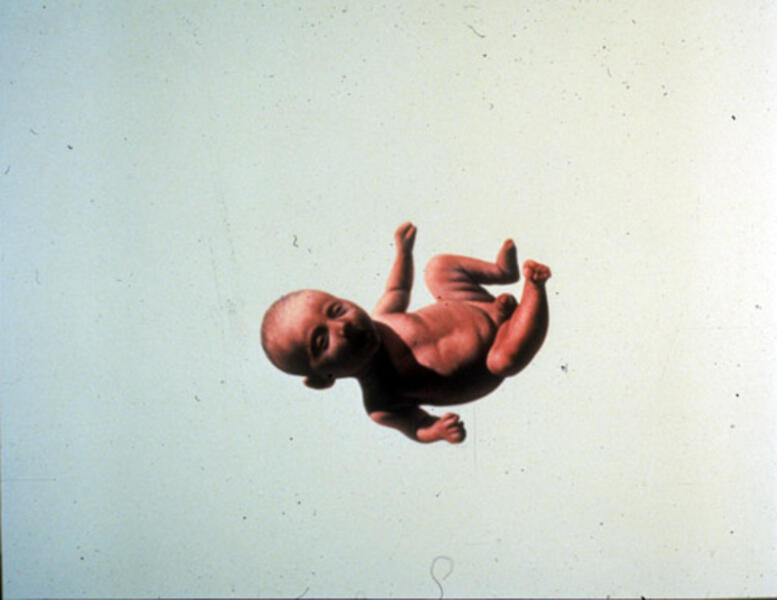About Karl
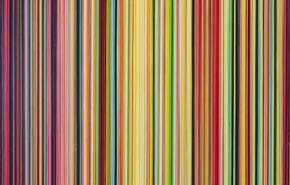
Born, Dublin, Ireland. Karl came to Baltimore in 1992 to study under Grace Hartigan at the Hoffberger School of Painting, MICA, and has been a city resident ever sinse. Karl showed with the C. Grimaldis Gallery for 16 years and currently manages his own studio practice. His work has been shown in many group and solo shows over the years at private, commercial and public spaces. Notable venues include The Contemporary, Chrysler Museum, Penn Station NYC, Walters Art Gallery. Collections… more
Jump to a project:
New Paintings 17/19
Ongoing studio practice.
-
Studio ShotDreamcatcher - Oil on Canvas - 104" x 82" - 2018
-
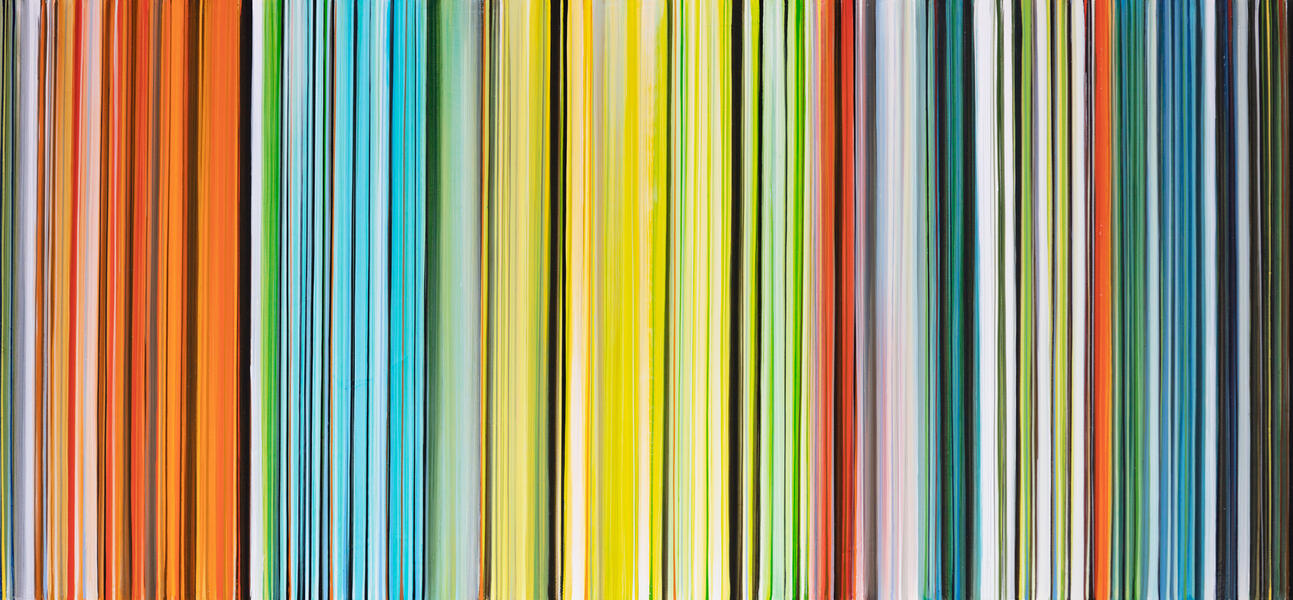 Shite and Onions.jpgOil on Canvas, 19.5" x 40", 2018
Shite and Onions.jpgOil on Canvas, 19.5" x 40", 2018 -
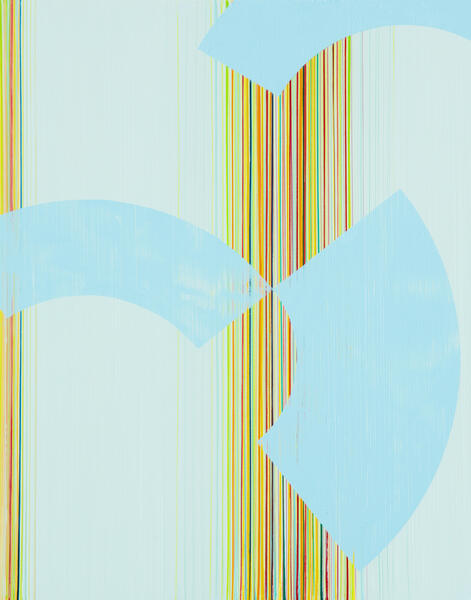 Drift 5Oil on Panel, 14" x 11", 2018
Drift 5Oil on Panel, 14" x 11", 2018 -
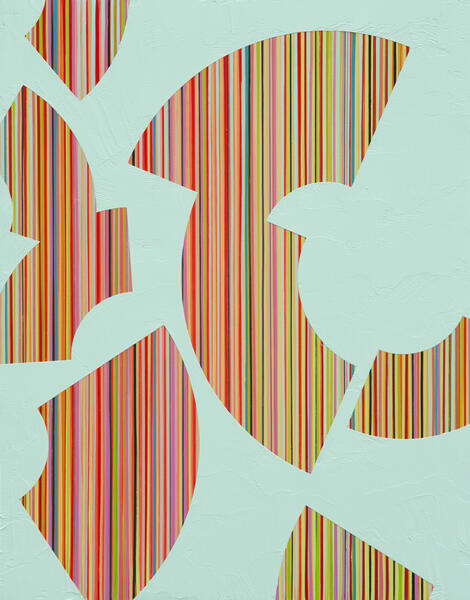 Drift 2oil on Panel, 14x11, 2018
Drift 2oil on Panel, 14x11, 2018 -
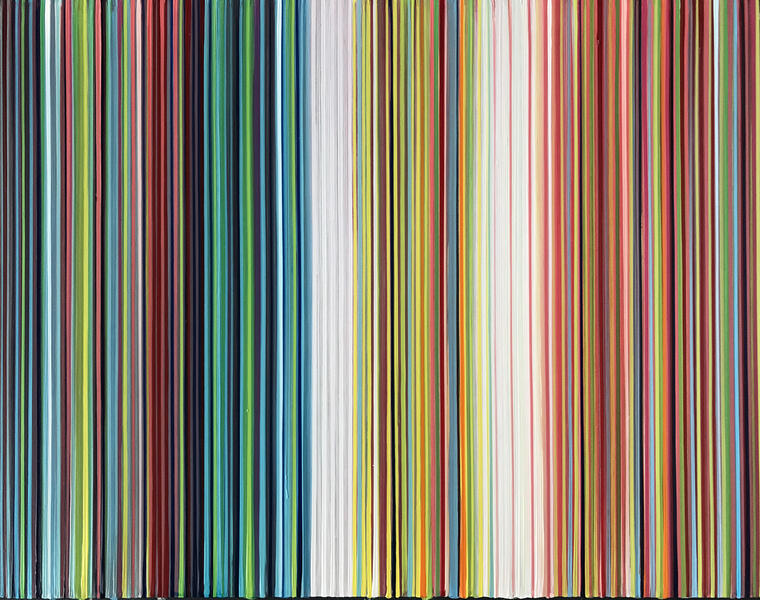 ButterOil on Panel, 11" x 14", 2018
ButterOil on Panel, 11" x 14", 2018 -
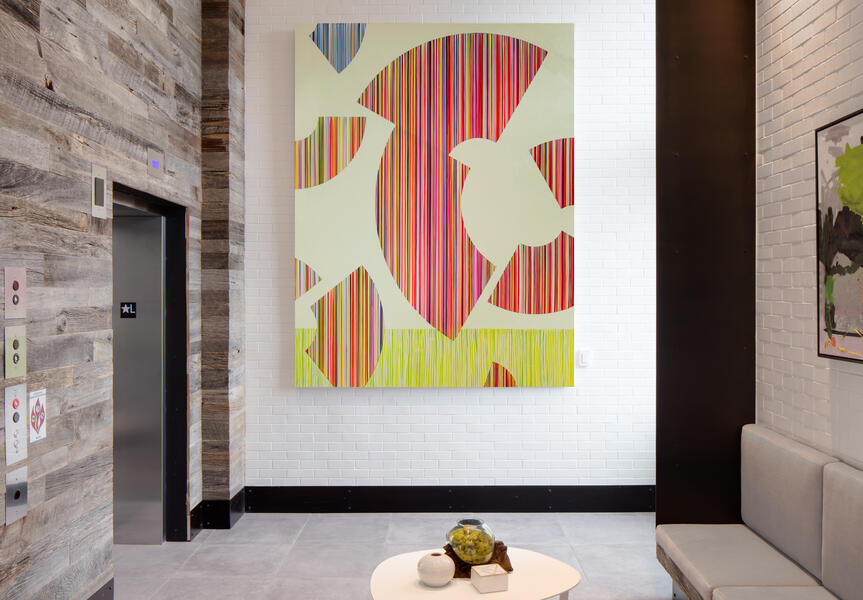 DreamcatcherOil on Canvas, 104" x 80", 2018
DreamcatcherOil on Canvas, 104" x 80", 2018 -
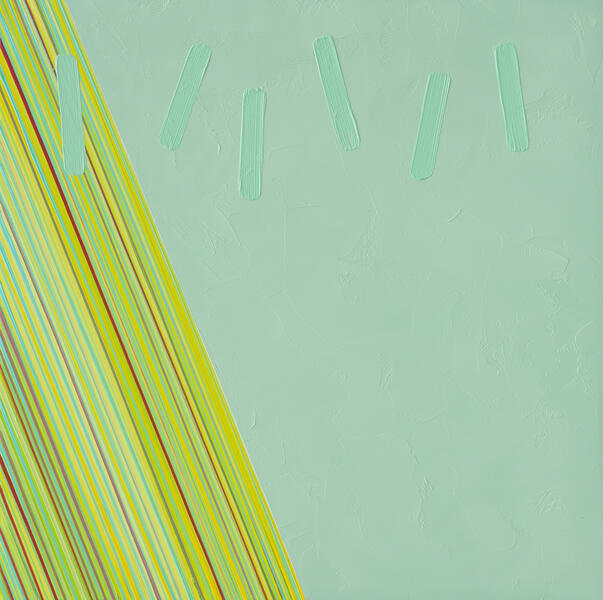 SlideOil On Panel, 14"x14" 2017
SlideOil On Panel, 14"x14" 2017 -
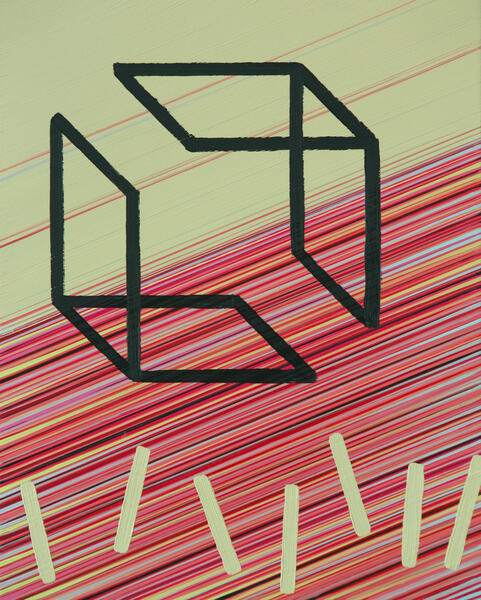 Hover 1Oil On Panel, 10"x 9" 2018
Hover 1Oil On Panel, 10"x 9" 2018 -
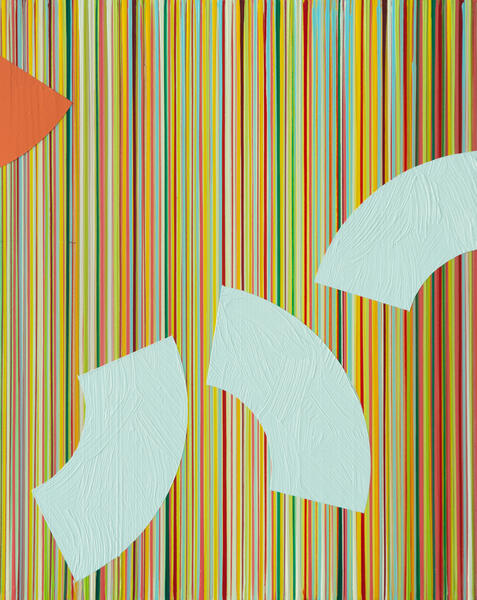 Drift 4Oil On Panel, 10"x8" 2018
Drift 4Oil On Panel, 10"x8" 2018 -
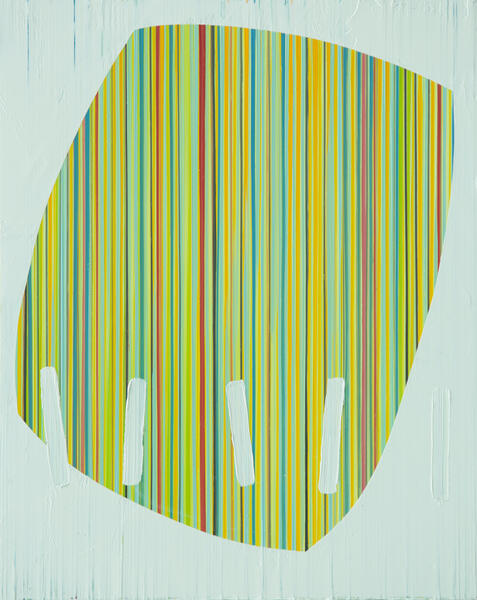 KneadOil On Panel, 10"x 8" 2017
KneadOil On Panel, 10"x 8" 2017
Stripes - Ongoing.
Ongoing inquiry - straight stripes, diagonals to push edges, combinations etc etc - all little machines.
-
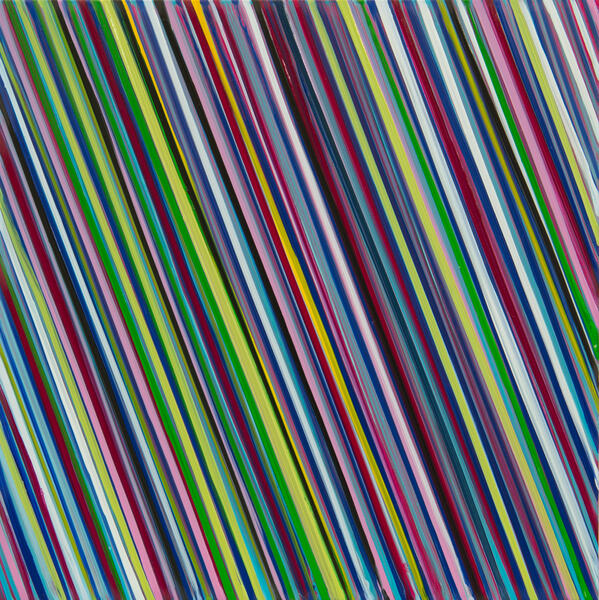 Lean 3.Oil on Panel, 10" x 10", 2016
Lean 3.Oil on Panel, 10" x 10", 2016 -
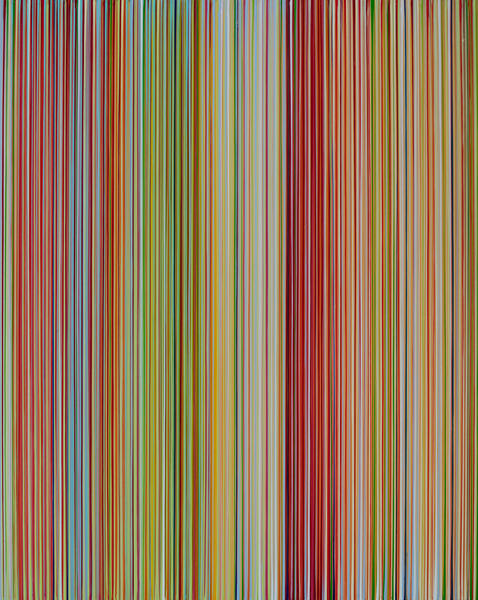 Slide 7Oil on Panel, 18"x14", 2017
Slide 7Oil on Panel, 18"x14", 2017 -
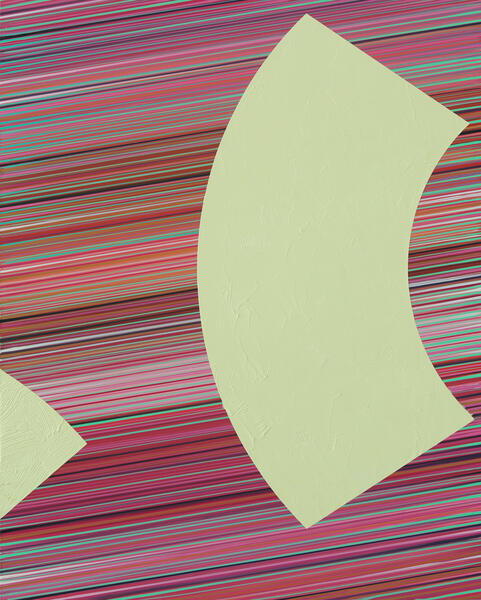 DriftOil on Panel, 20"x16", 2016
DriftOil on Panel, 20"x16", 2016 -
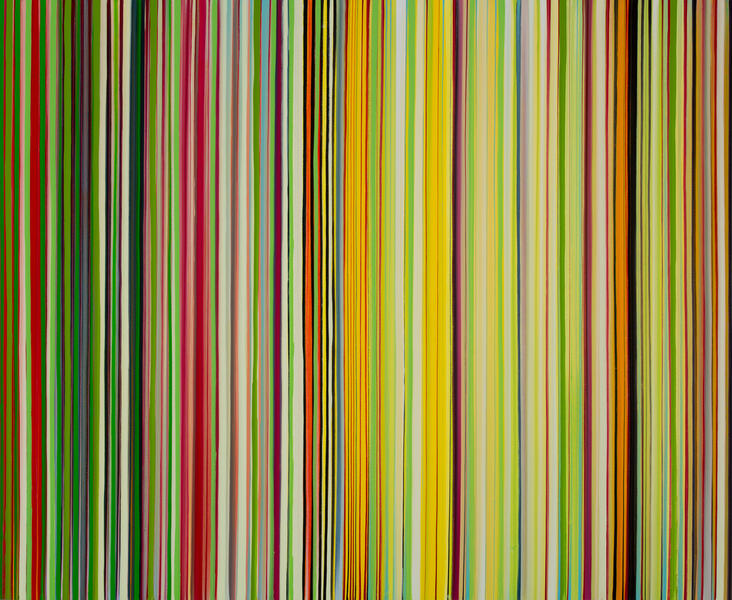 CovfefeOil on Canvas, 32" x 46", 2018
CovfefeOil on Canvas, 32" x 46", 2018 -
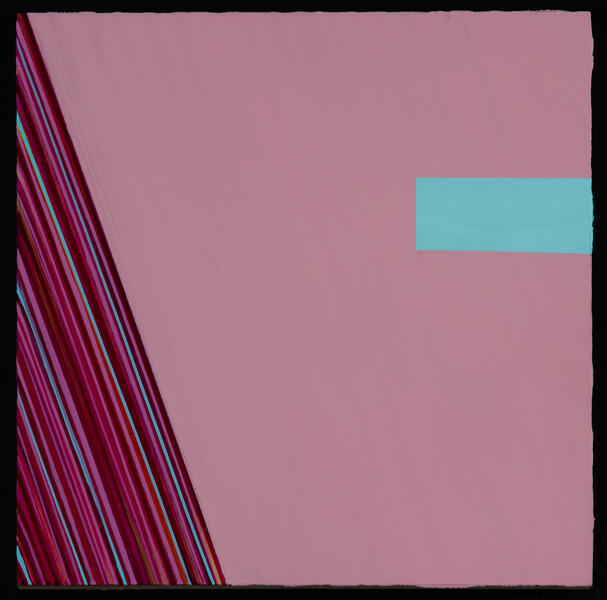 LeanOil on Panel, 8"x8", 2014
LeanOil on Panel, 8"x8", 2014 -
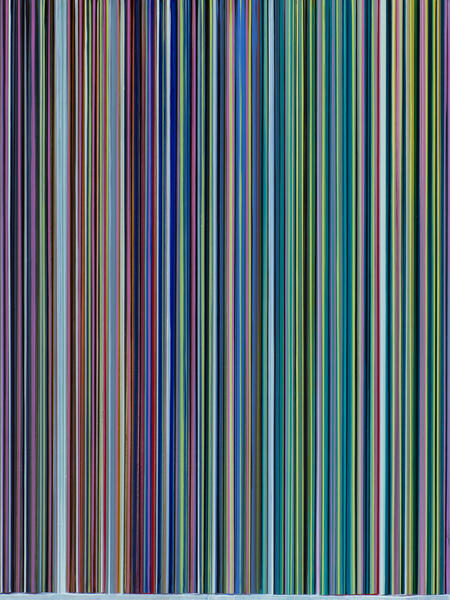 FractureOil on Panel, 58" x 40", 2014
FractureOil on Panel, 58" x 40", 2014 -
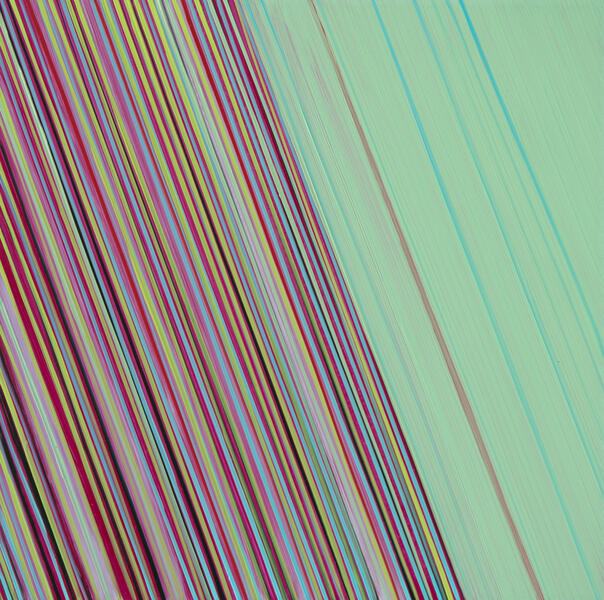 Lean 4Oil on Panel, 10"x10", 2017
Lean 4Oil on Panel, 10"x10", 2017 -
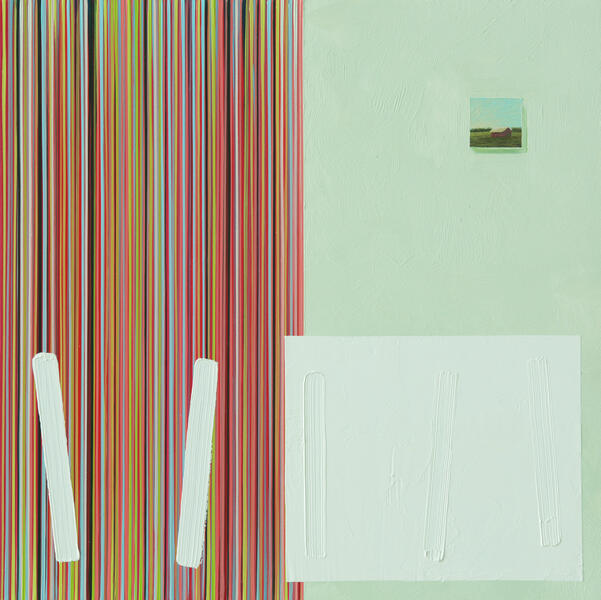 BarnOil on Panel, 16"x16", 2016
BarnOil on Panel, 16"x16", 2016 -
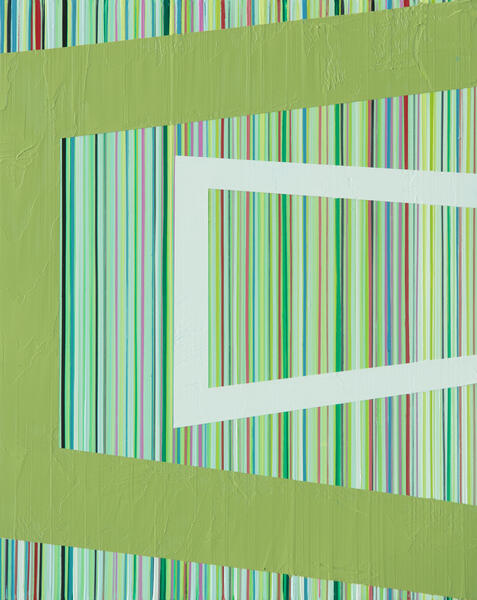 Fold 4Oil on Panel, 10"x8", 2017
Fold 4Oil on Panel, 10"x8", 2017 -
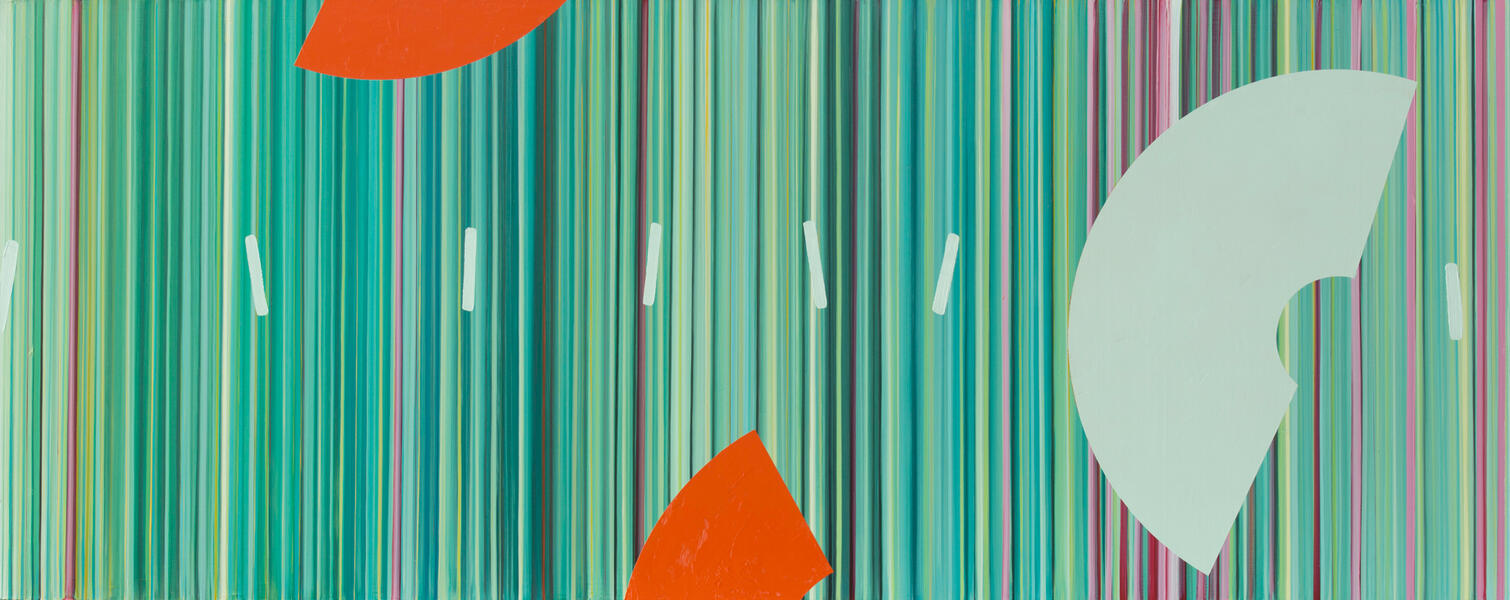 SlideOil on Canvas, 32" x 78" 2007 - 18,
SlideOil on Canvas, 32" x 78" 2007 - 18,
Stripes 2010-2016
During this period, I began toying with conventions I played around with almost a decade earlier, even if the general concerns have remained somewhat the same regardless of form. I am fundamentally interested in how a picture "works". I think of a painting as a mechanical thing of sorts. Images make the eye and the mind move in peculiar, though specific ways. I'm a formalist at heart, always have been. I see no difference between an image that is, conventionally speaking, representational, and one which is in the same manner abstract.
An image is a mythic space regardless of form. In the simplest sense I want my images to do something, to move, to push me around. In representational images I think of this happening through the types of associative spaces we all naturally attach to semi-familiar places and objects.
In these more recent stripe paintings the relationship is much more direct and assertive. As always, I simply make the work I want to see. I still believe there is work to be done in painting...
An image is a mythic space regardless of form. In the simplest sense I want my images to do something, to move, to push me around. In representational images I think of this happening through the types of associative spaces we all naturally attach to semi-familiar places and objects.
In these more recent stripe paintings the relationship is much more direct and assertive. As always, I simply make the work I want to see. I still believe there is work to be done in painting...
-
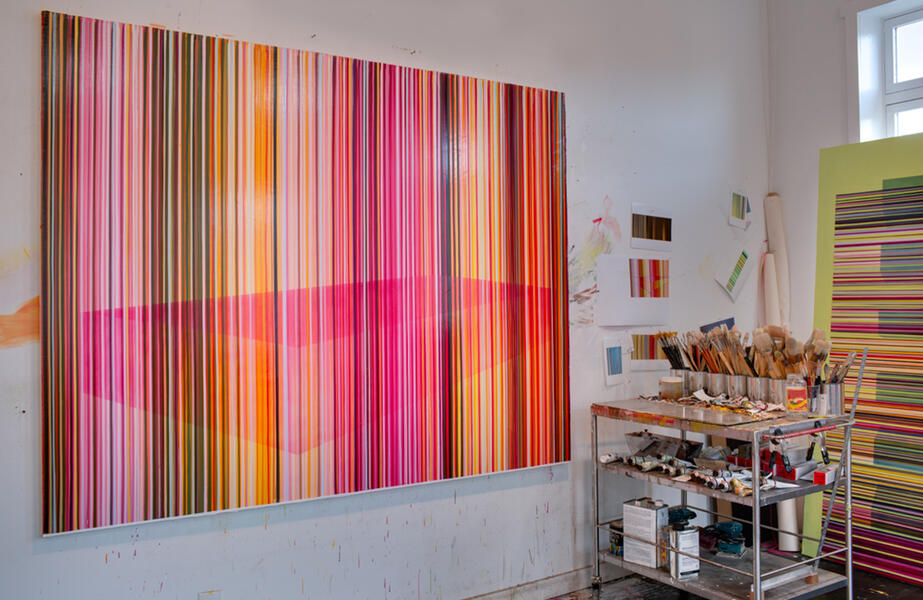 Studio with Beacon - 2012
Studio with Beacon - 2012 -
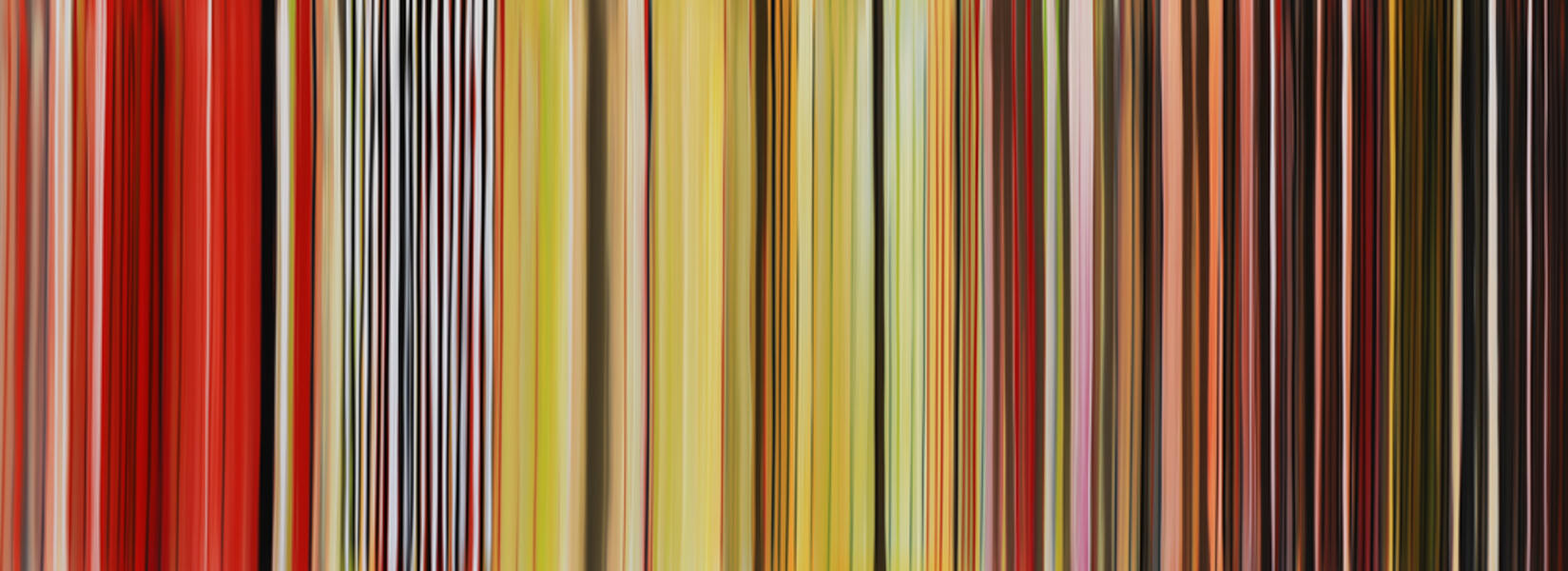 Alice in Wonderland.Oil On Panel, 12"x32" 2012
Alice in Wonderland.Oil On Panel, 12"x32" 2012 -
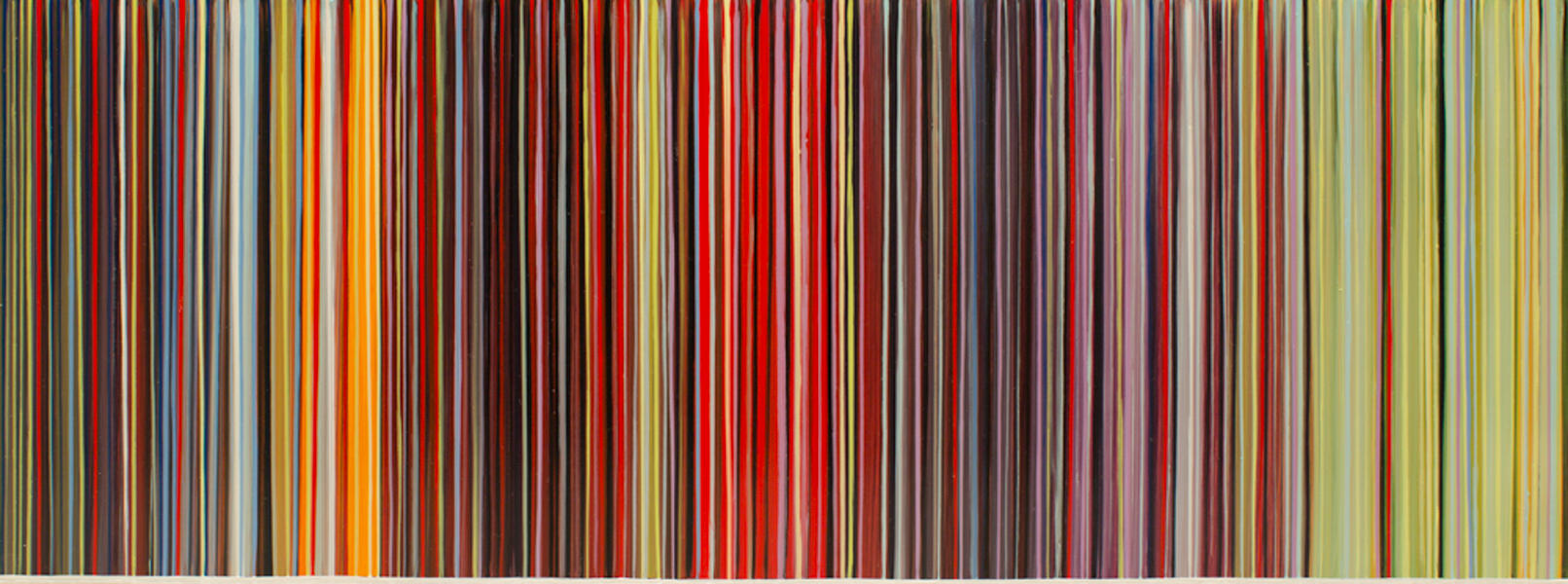 Desordre (Ligeti)Oil on Panel, 2015, 6" x 22"
Desordre (Ligeti)Oil on Panel, 2015, 6" x 22" -
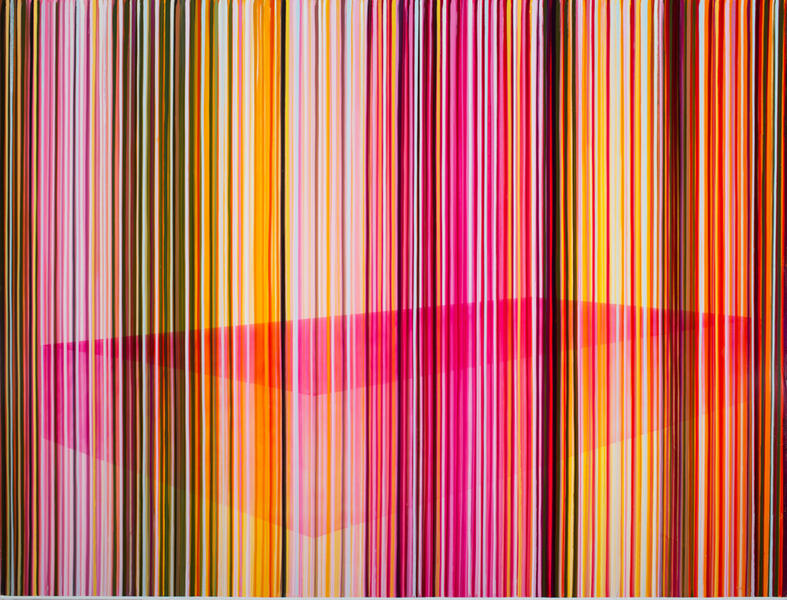 BeaconOil on Canvas, 62" x 84", 2012
BeaconOil on Canvas, 62" x 84", 2012 -
 Big TruckOil On Panel, 10"x40" 2013
Big TruckOil On Panel, 10"x40" 2013 -
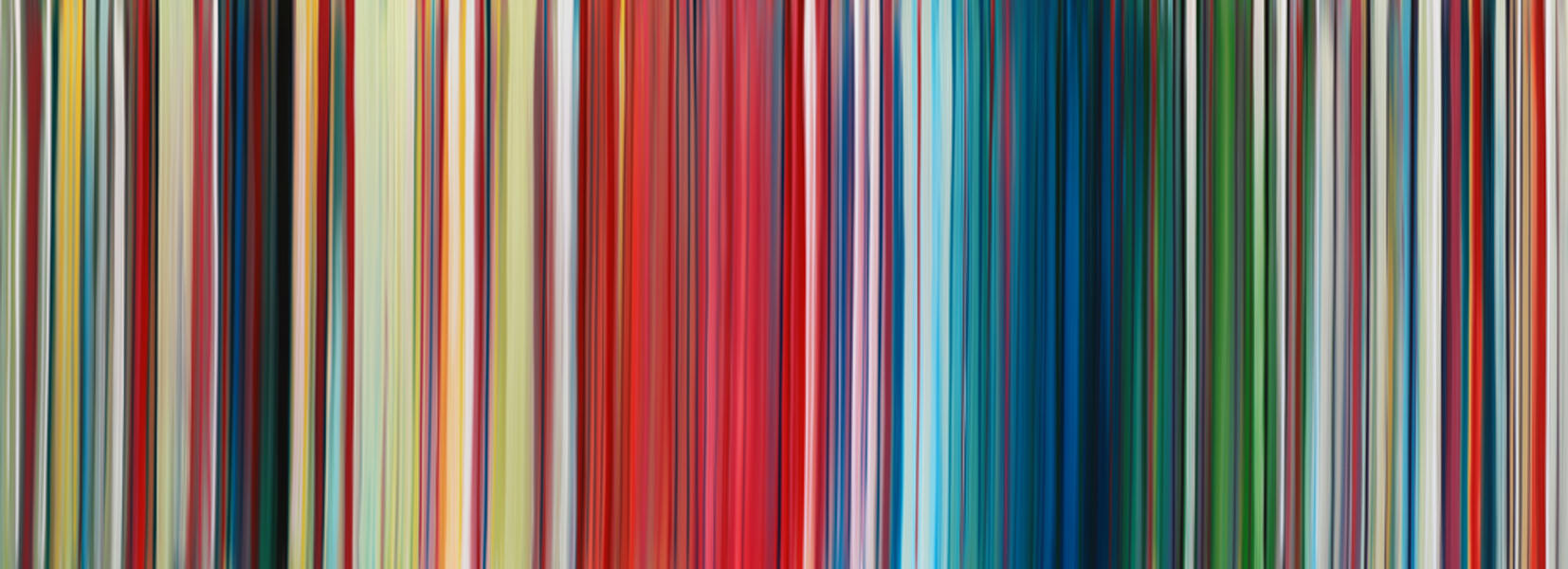 GlimerOil on Panel, 9"x24", 2012
GlimerOil on Panel, 9"x24", 2012 -
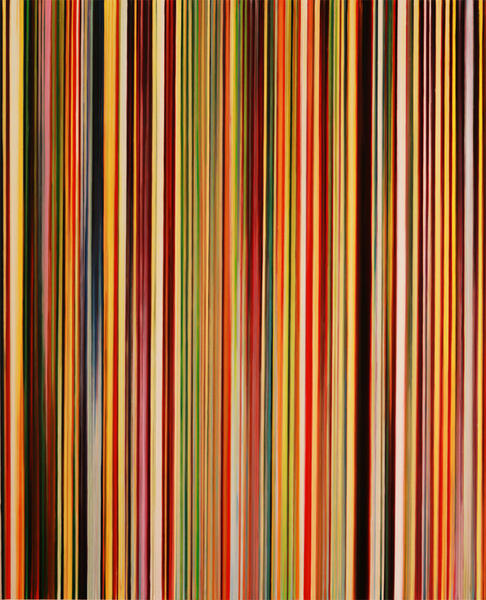 Hum 4Oil on Panel, 60"x40", 2010
Hum 4Oil on Panel, 60"x40", 2010 -
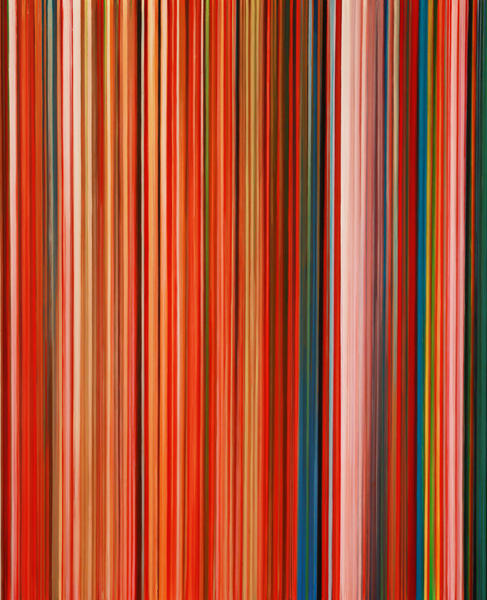 SlipOil on Panel, 60"x40", 2010
SlipOil on Panel, 60"x40", 2010 -
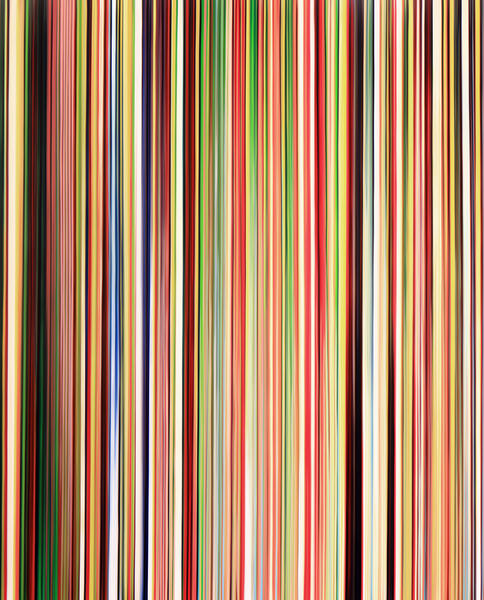 Hold 2Oil on Panel, 60"x40", 2010
Hold 2Oil on Panel, 60"x40", 2010 -
 RedlineOil on Panel, 8"x 48", 2013
RedlineOil on Panel, 8"x 48", 2013
Stripes 2010 - 16 (2)
-
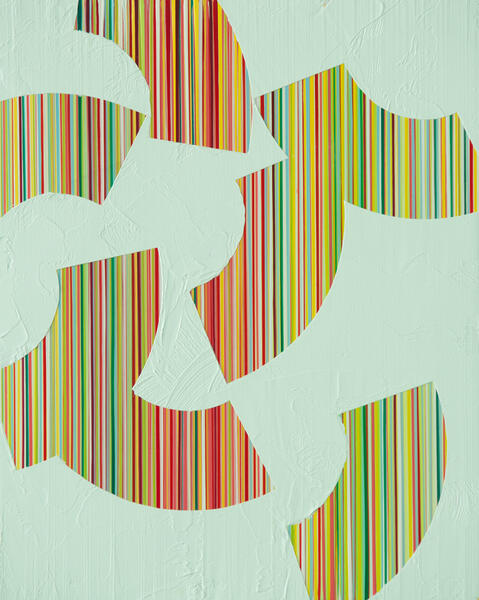 PivotOil on Panel, 10"x8", 2016
PivotOil on Panel, 10"x8", 2016 -
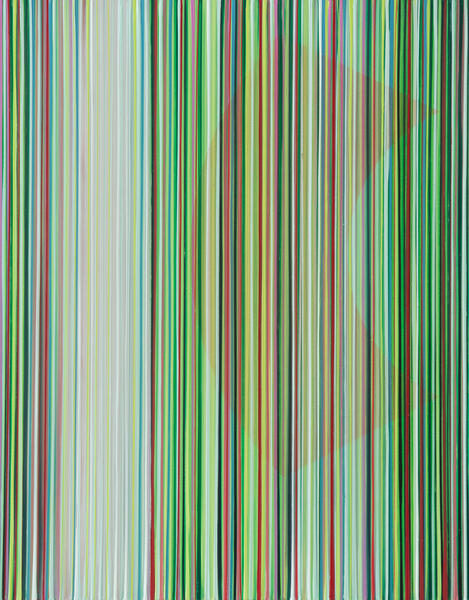 Ghost 1Oil on Panel, 18" x 12", 2016
Ghost 1Oil on Panel, 18" x 12", 2016 -
 Autumn WalkOil on Panel, 19" x 84", 2011
Autumn WalkOil on Panel, 19" x 84", 2011 -
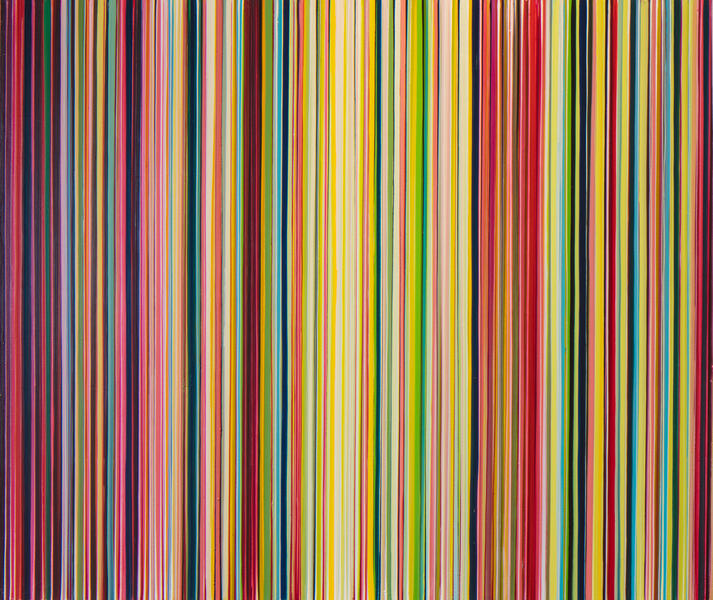 Hum 8Oil on Panel, 38" x 50", 2010
Hum 8Oil on Panel, 38" x 50", 2010 -
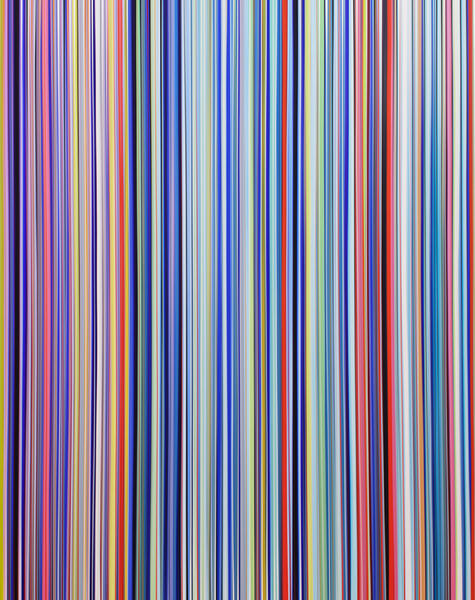 3 TowersOil on Canvas, 42" x 34", 2011
3 TowersOil on Canvas, 42" x 34", 2011 -
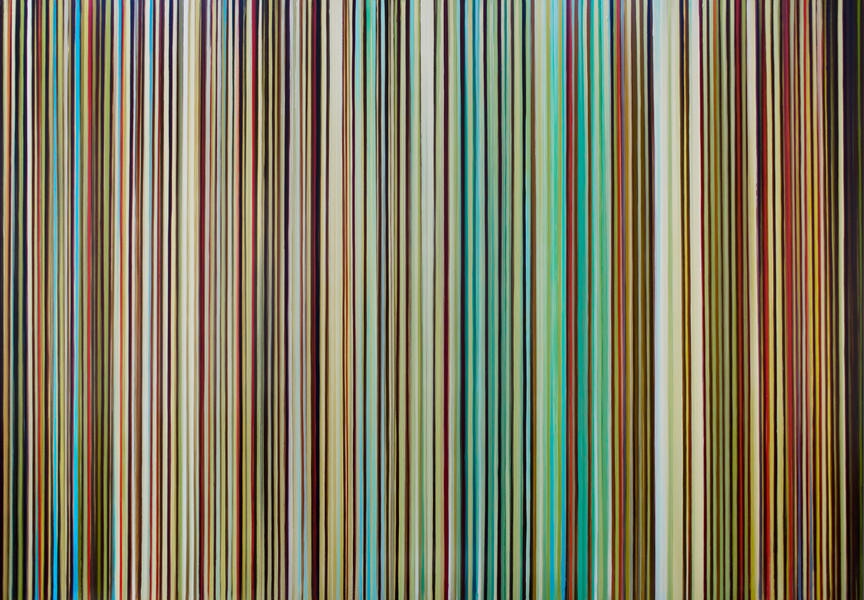 Gruffalo 1Oil on Panel, 38" x 52", 2010
Gruffalo 1Oil on Panel, 38" x 52", 2010 -
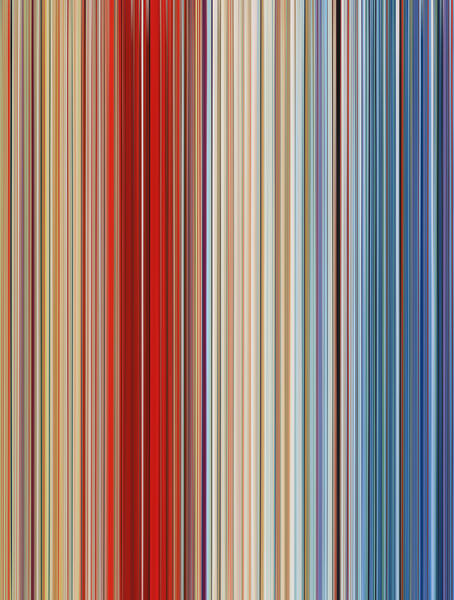 DropOil on Canvas, 52" x 36", 2012
DropOil on Canvas, 52" x 36", 2012 -
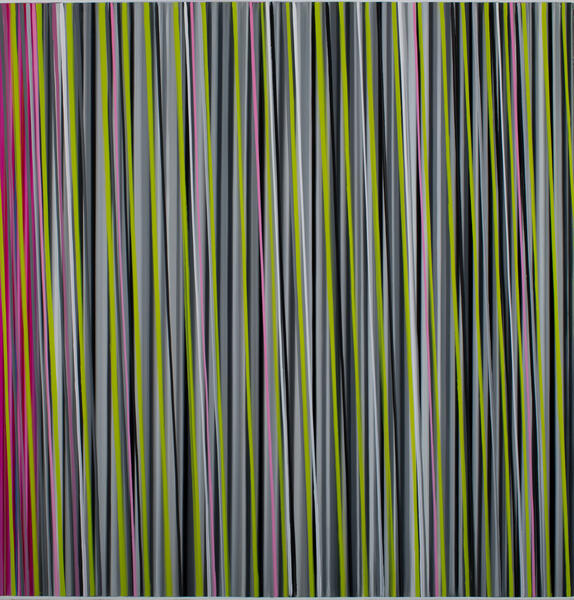 Hum 2.Oil on Canvas, 60" x 62", 2011
Hum 2.Oil on Canvas, 60" x 62", 2011 -
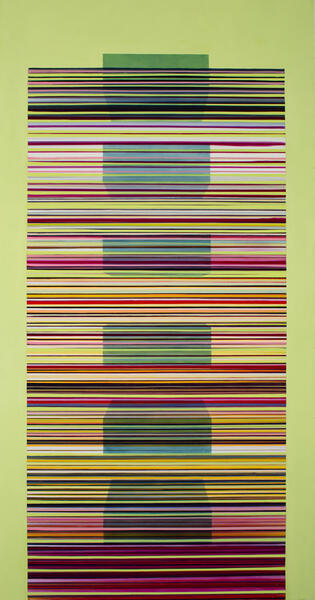 SixOil on Canvas, 84" x 32", 2011
SixOil on Canvas, 84" x 32", 2011 -
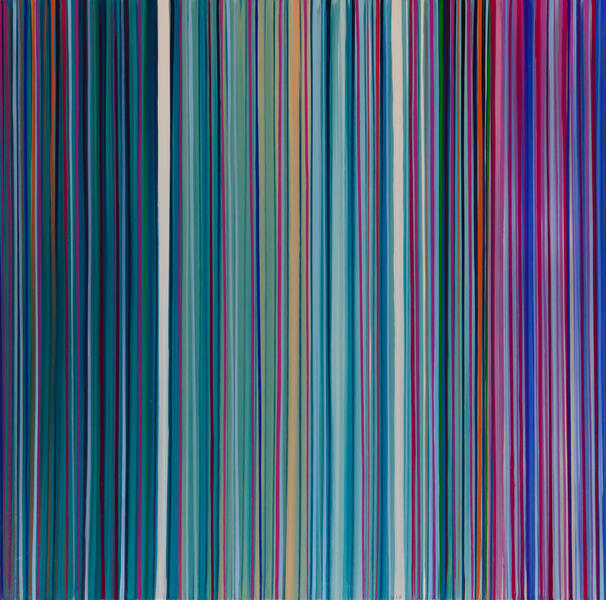 SweepOil on Panel, 14" x 16", 2012
SweepOil on Panel, 14" x 16", 2012
Early Stripe Paintings 1999 - 2004
Between 1999 and 2001 I was working to explore notions of economy in painting, distilling elaborate conventions down to more elemental decisions. Initially these paintings were derived exclusively from photography as I played with retaining a concrete evocation even as the image itself disolved. In time they became stand alone formal Paintings which simply emerged through the process of the mark-making itself, with no pre-ordained order, hue or rhythm. They are beautiful paintings and develop quite literally through a conversational process.
Stories, of sorts. 2004 - 2013
The work included here represents samples of work from a 9 year period where I was playing with the natural interplay between the surface of the canvas and illusionary space it tends to contain. As a painter I've always believed in simply making the work I want to see.
I am interested in how an image works; in how an image, though perfectly static is experienced in what might reasonably be called contemplative time. My method of practice has generally revolved around the idea of making a body of work based on current interests and aesthetic needs. Earlier work relied heavily on the ironic use of iconography and procedural conventions tied to 17th European painting. In time both my palette and my content shifted as I continued to refine my relationship with painting.
The broad interrelationships between painting and photography played a central role in my work for a number of years. I worked with a reduced palette and began to play with blur, distortion and depth of field notions. In time this led to further reductions in surface conventions resulting in a body of work which relied entirely on repeated sequences of transparent vertical marks, where the only variable was color. These Stripe paintings ran their course but as I returned to representational conventions the surface was still something I want to play on. From here I have slowly returned to procedural conventions more directly related to work I was making many years ago. Painting is a strange game. (2013).
I am interested in how an image works; in how an image, though perfectly static is experienced in what might reasonably be called contemplative time. My method of practice has generally revolved around the idea of making a body of work based on current interests and aesthetic needs. Earlier work relied heavily on the ironic use of iconography and procedural conventions tied to 17th European painting. In time both my palette and my content shifted as I continued to refine my relationship with painting.
The broad interrelationships between painting and photography played a central role in my work for a number of years. I worked with a reduced palette and began to play with blur, distortion and depth of field notions. In time this led to further reductions in surface conventions resulting in a body of work which relied entirely on repeated sequences of transparent vertical marks, where the only variable was color. These Stripe paintings ran their course but as I returned to representational conventions the surface was still something I want to play on. From here I have slowly returned to procedural conventions more directly related to work I was making many years ago. Painting is a strange game. (2013).
Figure 1990 - 97
I worked with the figure on and off for years, and as a younger painter was known primarily for large figurative images fused with Baroque conventions. No surface is as charged with the history of painting as the evocation of flesh. To paint the figure is to speak directly to history.
Landscape 1990 - 2012
I never paint from life and I never paint specific places. My landscapes have always been constructions of sorts, conjured up spaces whose form is dictated by the story I'm looking to find. I think about the landscape as a dwellable space, a thinking space.
-
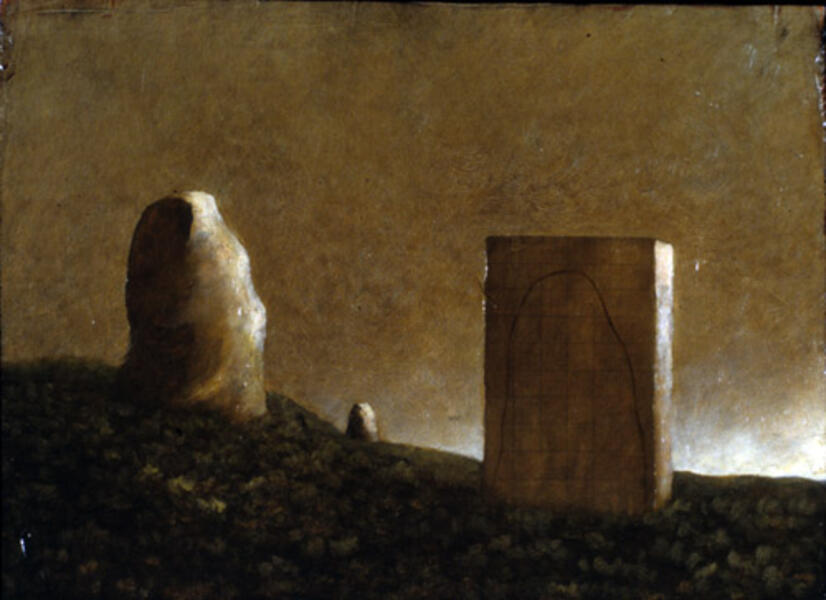 Landscape with Stone1994 o/c 9"X12"
Landscape with Stone1994 o/c 9"X12" -
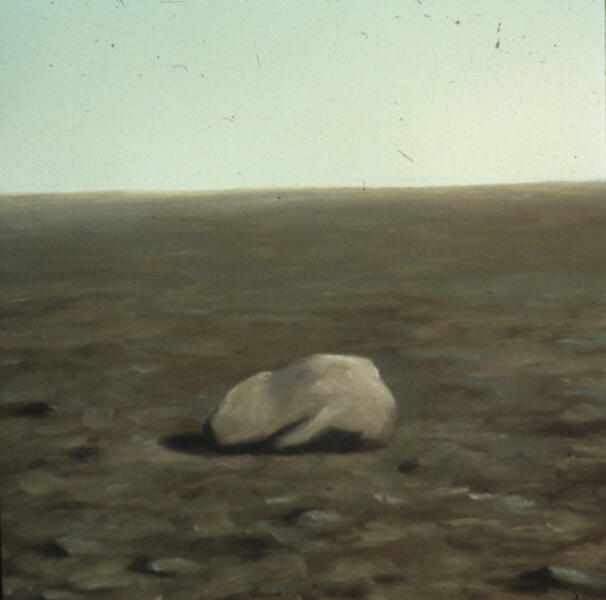 Depth of field 71996 o/p 8" x 8"
Depth of field 71996 o/p 8" x 8" -
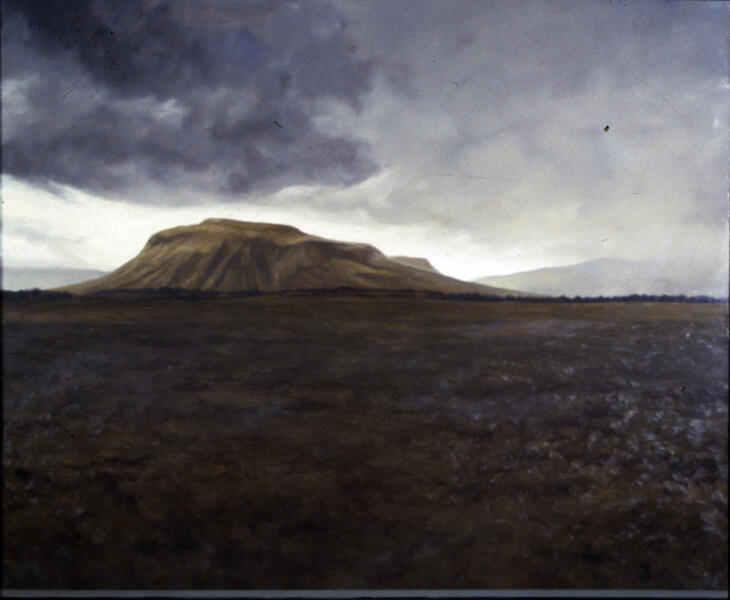 Ben Bulben1997 o/c 46" x 54"
Ben Bulben1997 o/c 46" x 54" -
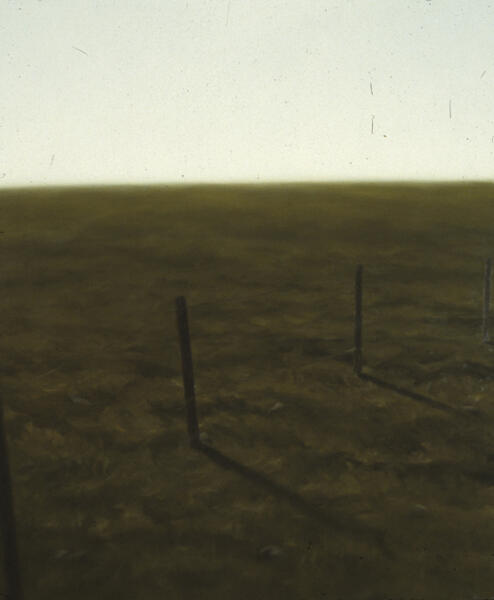 Depth of Field 281999 o/c 30" x 18"
Depth of Field 281999 o/c 30" x 18" -
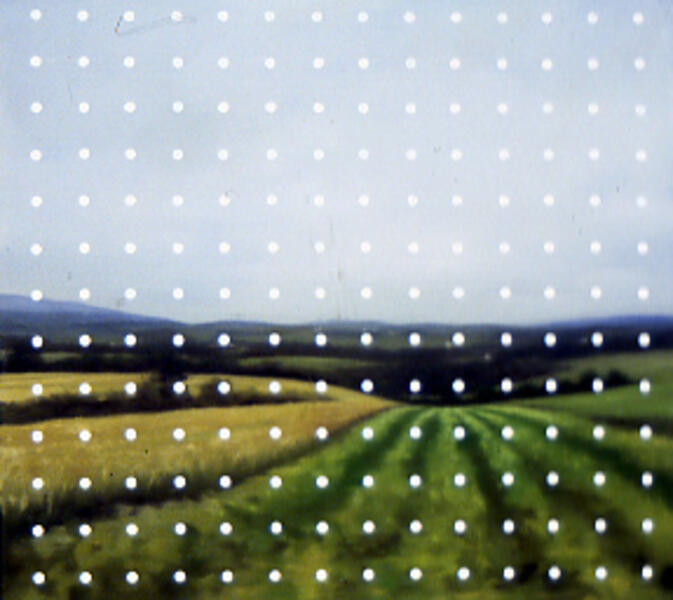 Landscape with Dots1997 o/c 22"x22"
Landscape with Dots1997 o/c 22"x22" -
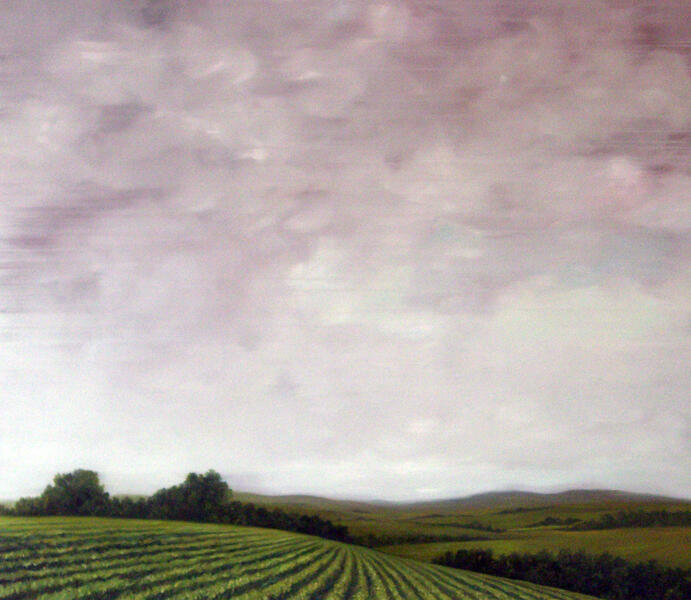 Ploughed Field2007 o/c 36" x 48"
Ploughed Field2007 o/c 36" x 48" -
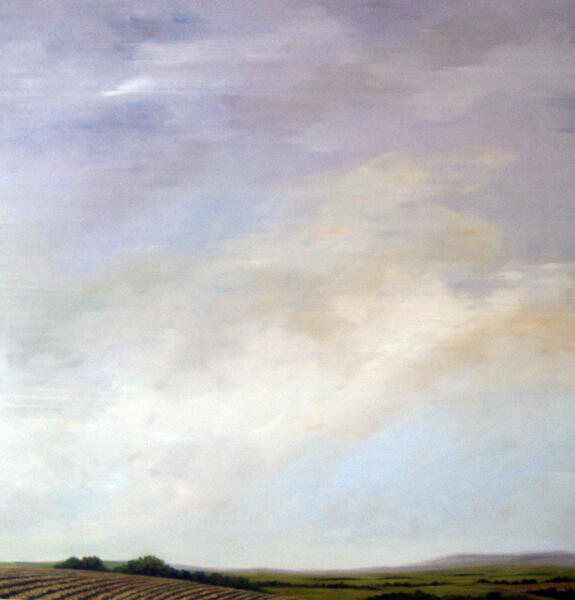 Ploughed Field #22007 o/c 72" x 72"
Ploughed Field #22007 o/c 72" x 72" -
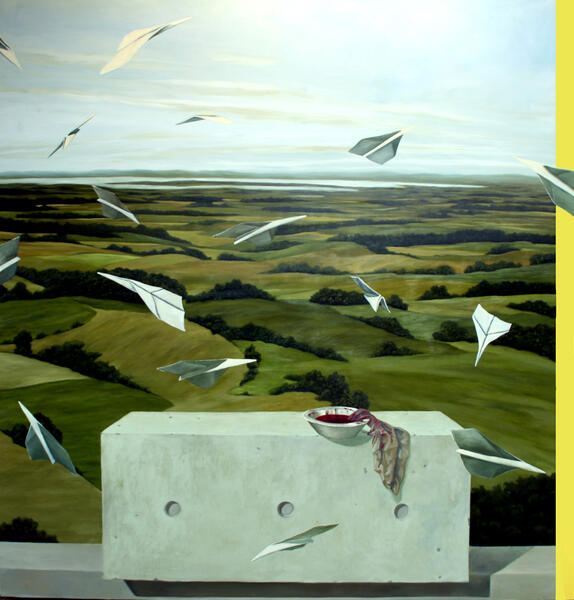 Landscape with Bowl2007 o/c 72" x 68"
Landscape with Bowl2007 o/c 72" x 68" -
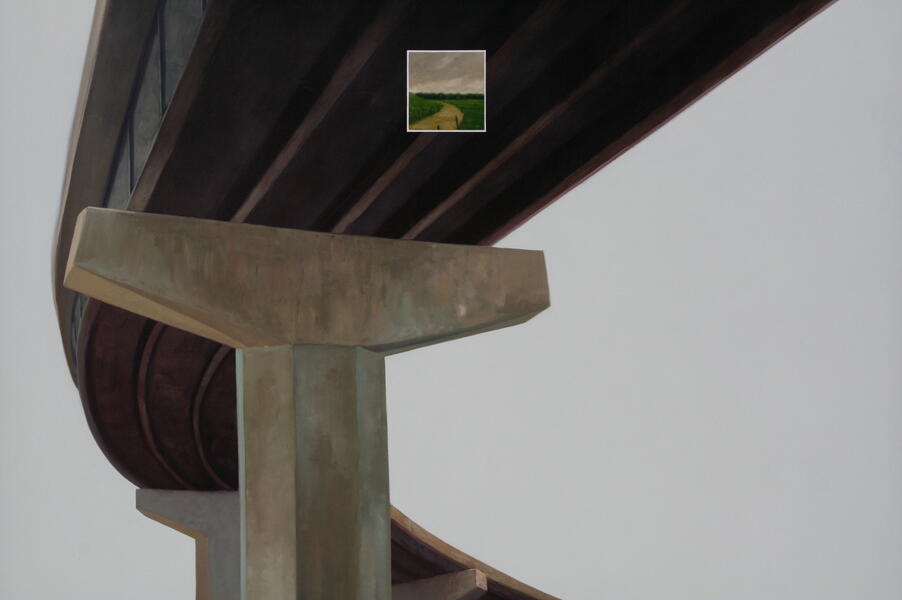 Bend2008 o/c 32"x48"
Bend2008 o/c 32"x48" -
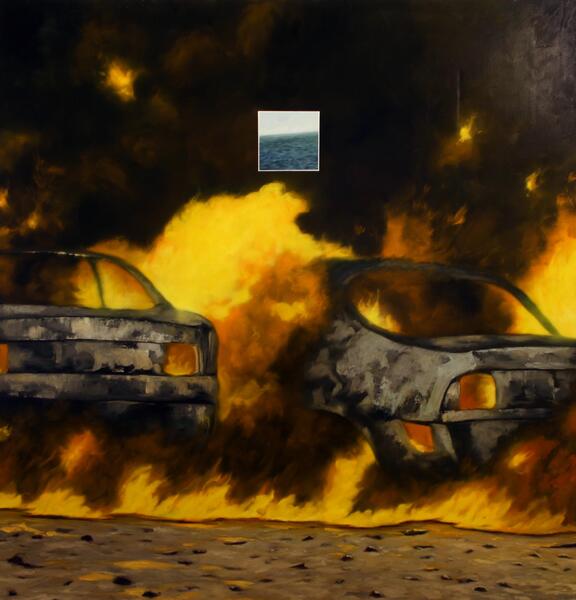 Ocean with 2 Cars2007 o/c 62" x 64"
Ocean with 2 Cars2007 o/c 62" x 64"
Objects 1992 - 2011
At times I like to simply paint an object, to focus on its surface, its form and the space it defines around itself. There is something simple and elegant in this. Realism is not the game.
-
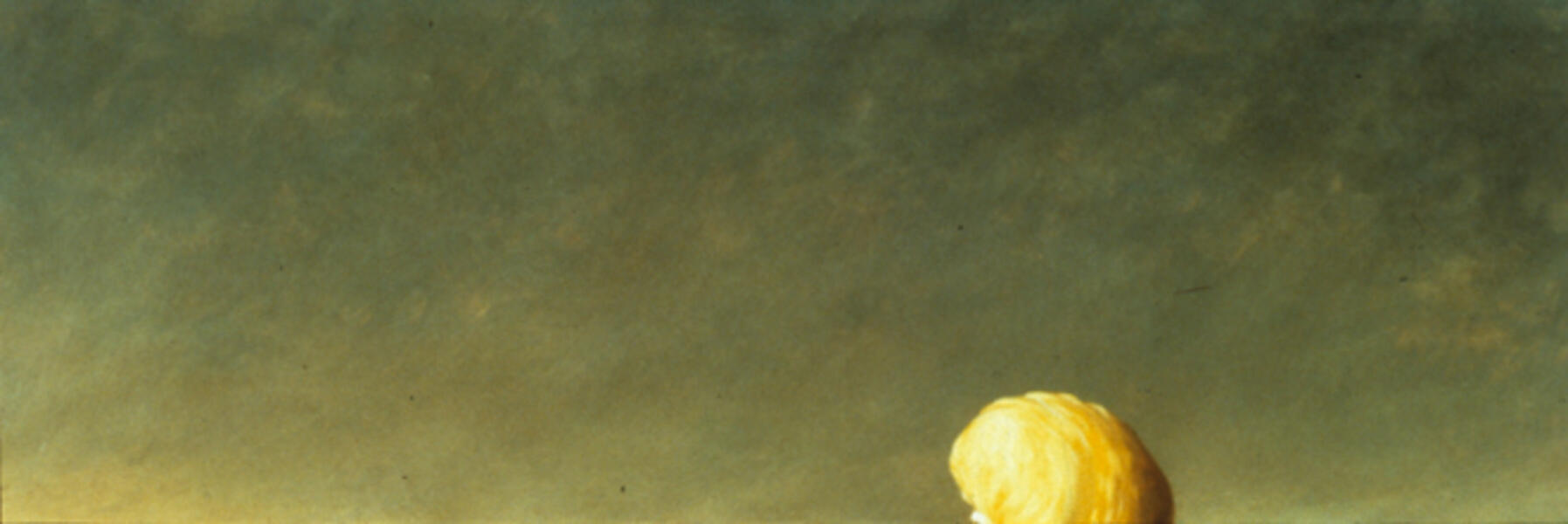 Hat Painting1995 o/c 9" x 18"
Hat Painting1995 o/c 9" x 18" -
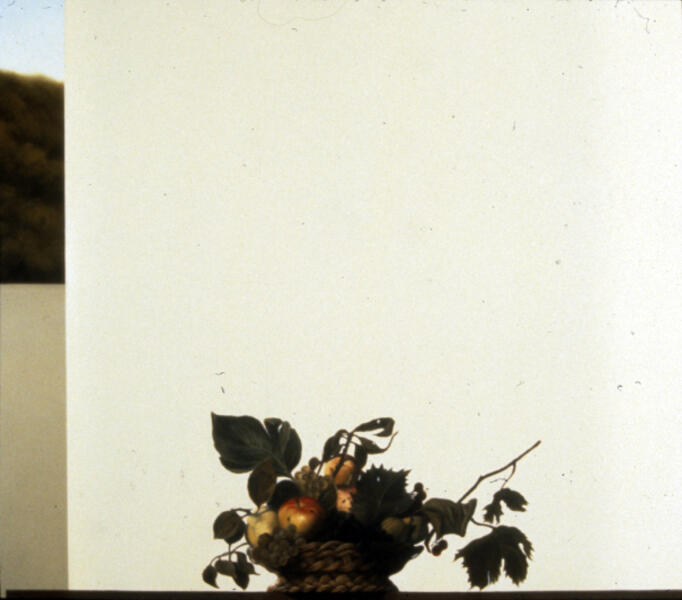 Basket Of Fruit1995 o/c 42" x 48"
Basket Of Fruit1995 o/c 42" x 48" -
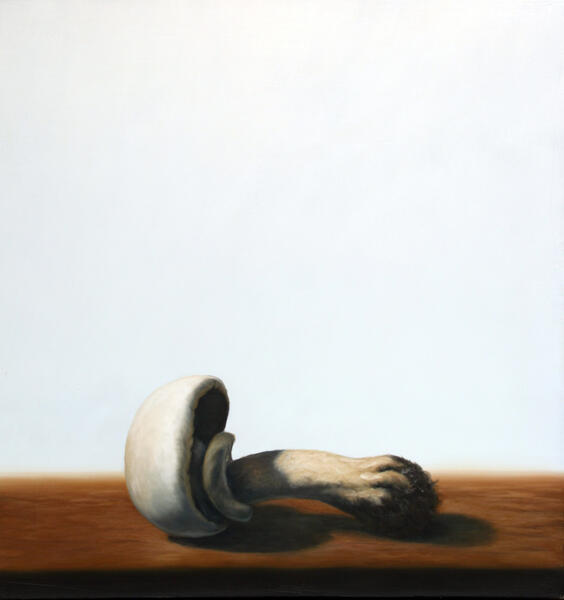 Still Life with Mushroom1996 o/c 18" x 14"
Still Life with Mushroom1996 o/c 18" x 14" -
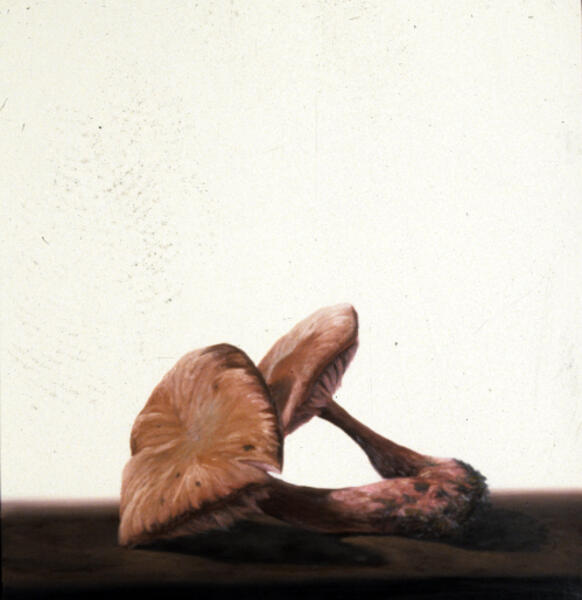 Still Life with Mushroom 21996 o/c 18" x 14"
Still Life with Mushroom 21996 o/c 18" x 14" -
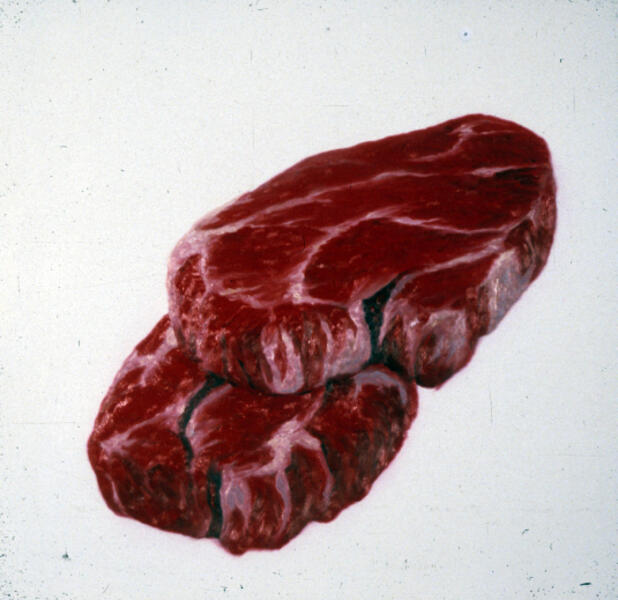 Meat # 42003 o/p 16"x16"
Meat # 42003 o/p 16"x16" -
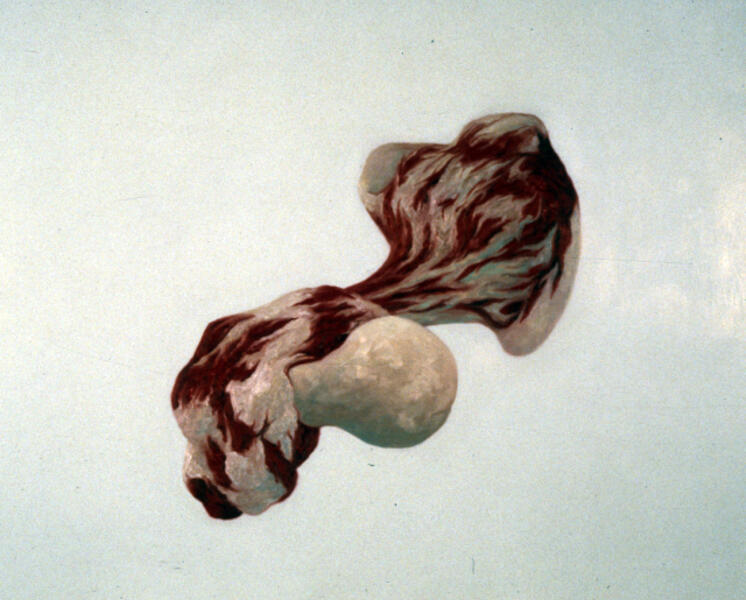 Meat # 52004 o/c 24" x 30"
Meat # 52004 o/c 24" x 30" -
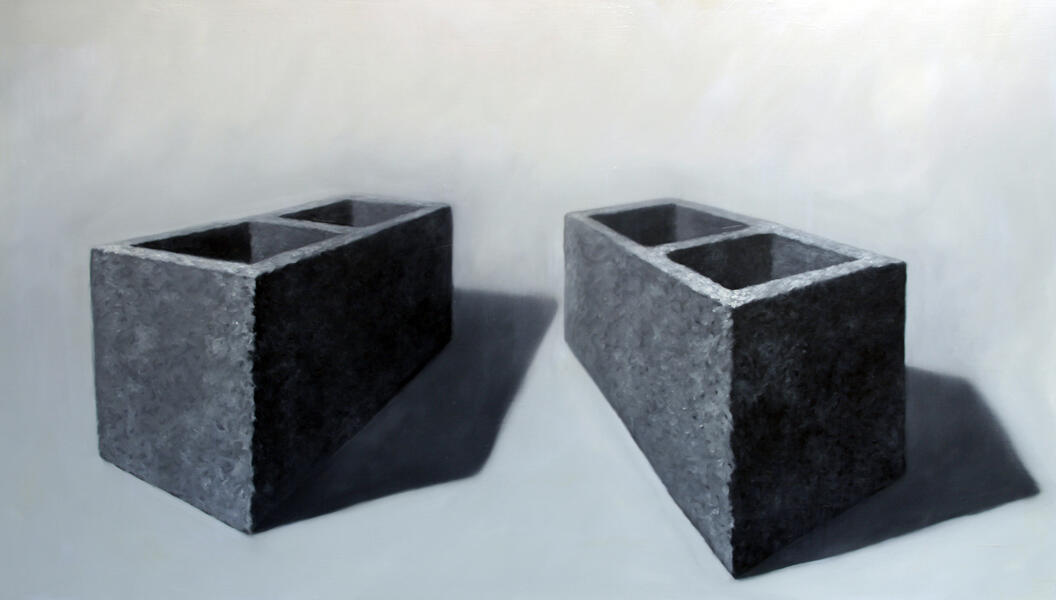 duet2005
duet2005 -
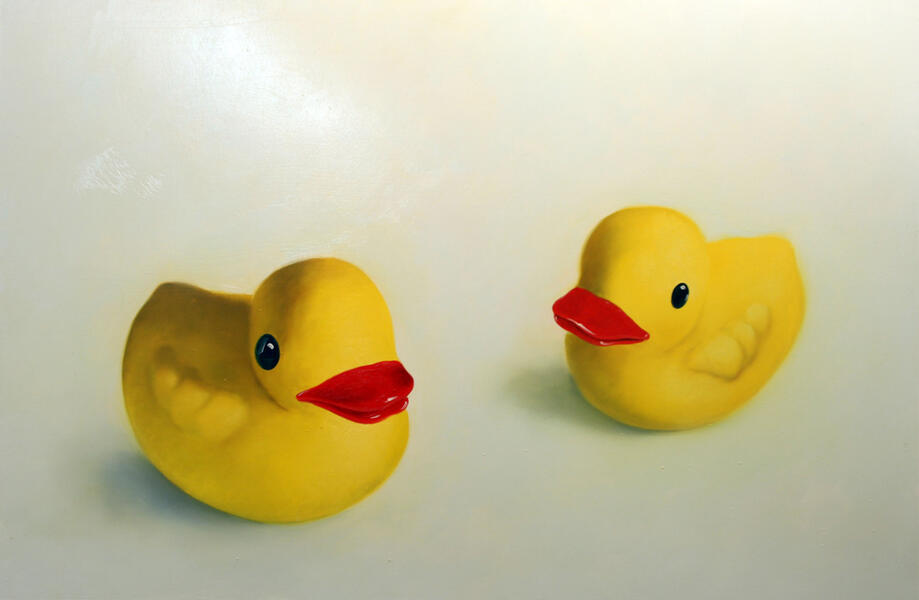 Double Duck2006 o/p 16" x 22"
Double Duck2006 o/p 16" x 22" -
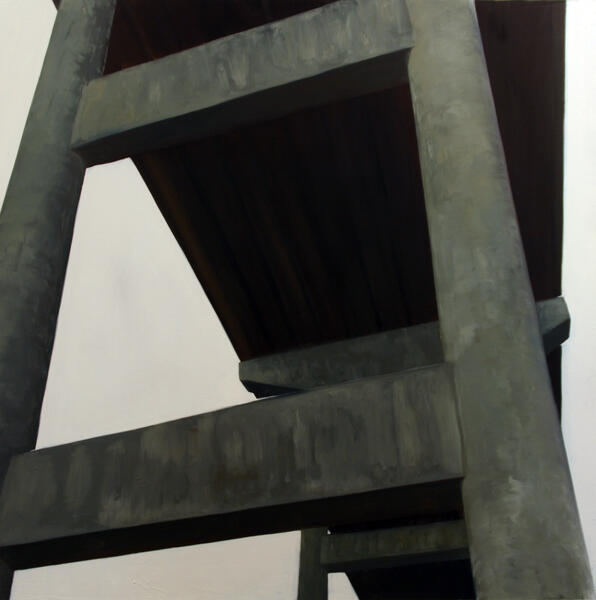 Overpass 32008 o/c 16" x 16"
Overpass 32008 o/c 16" x 16" -
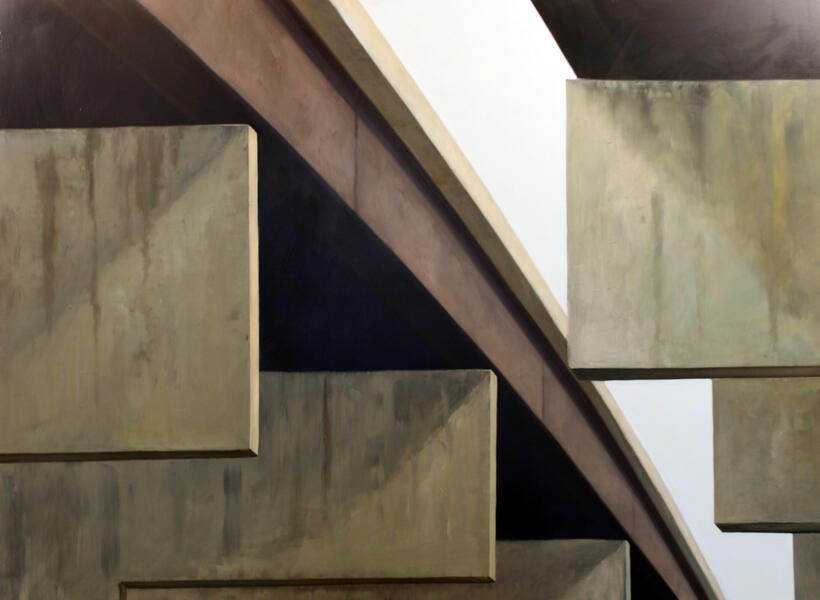 Overpass 72008 o/c 28" x 36"
Overpass 72008 o/c 28" x 36"

